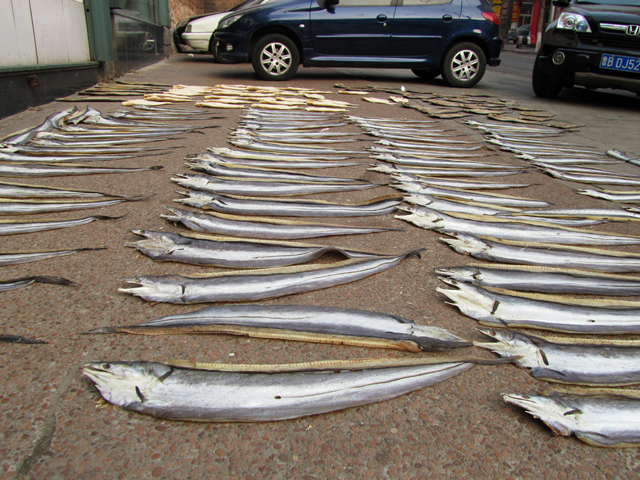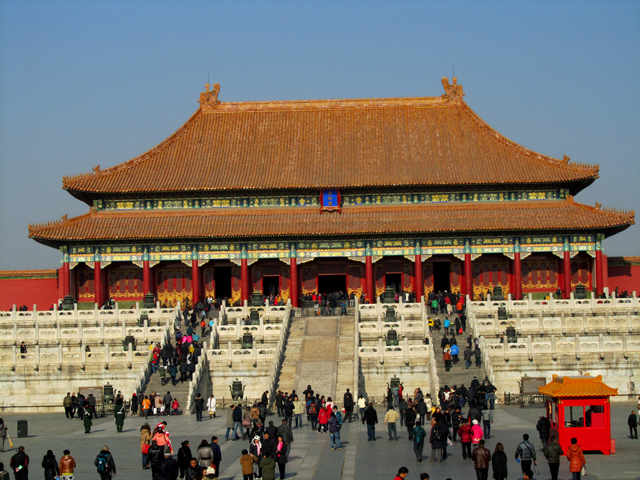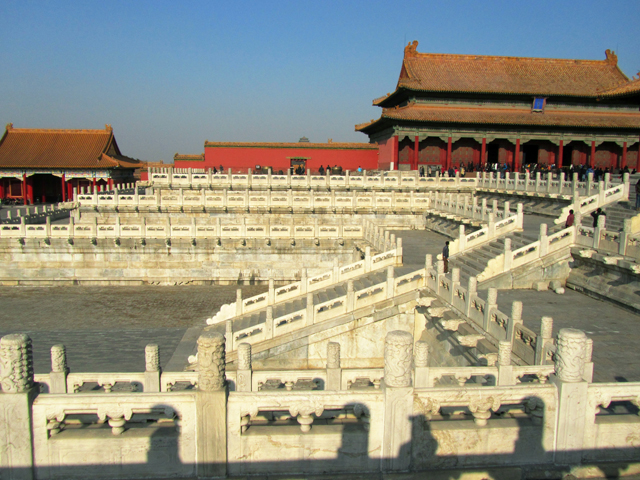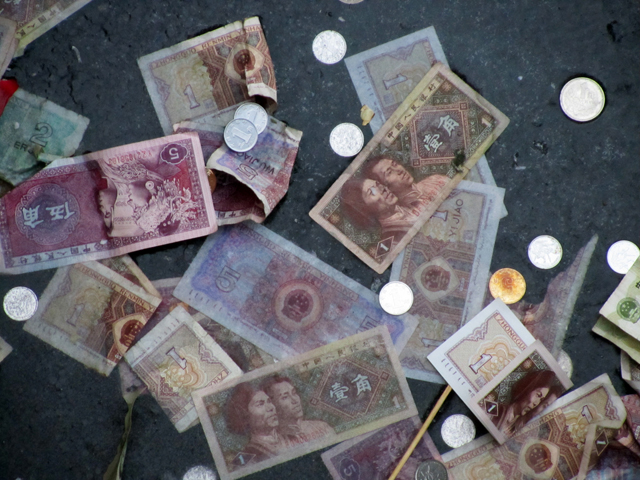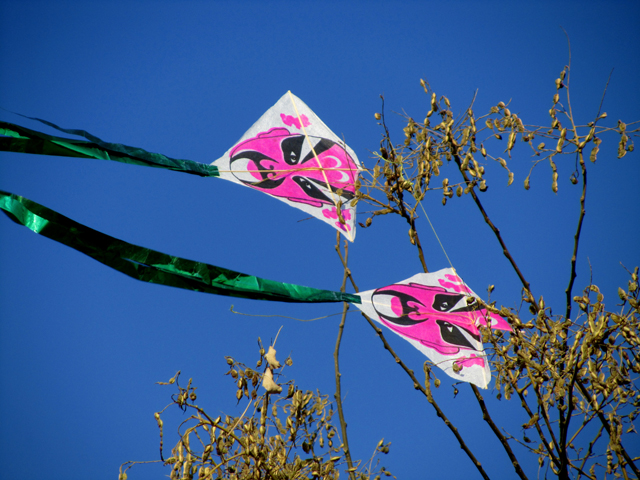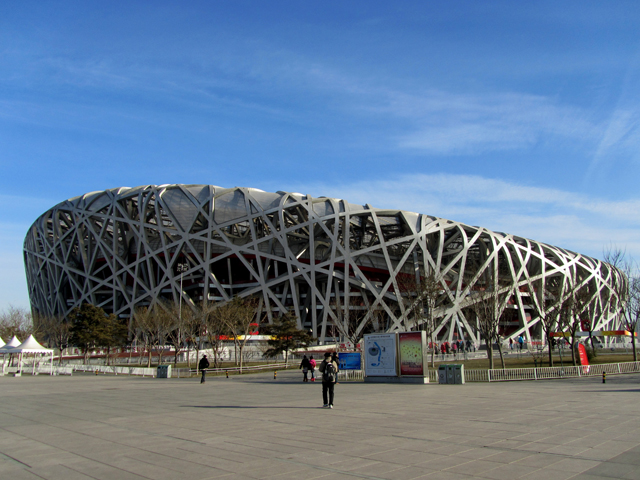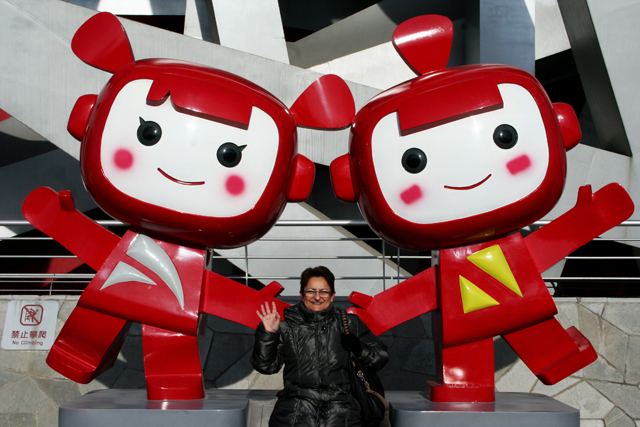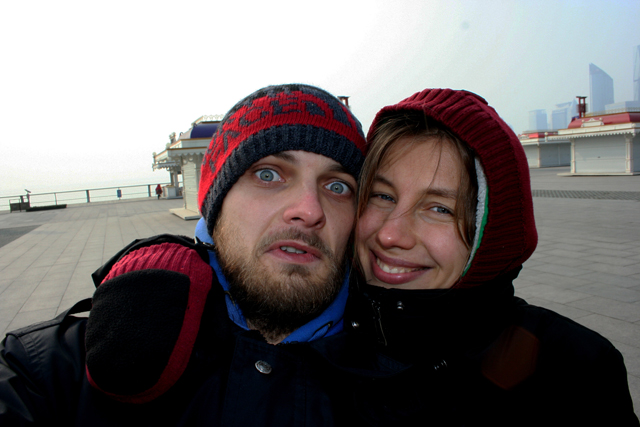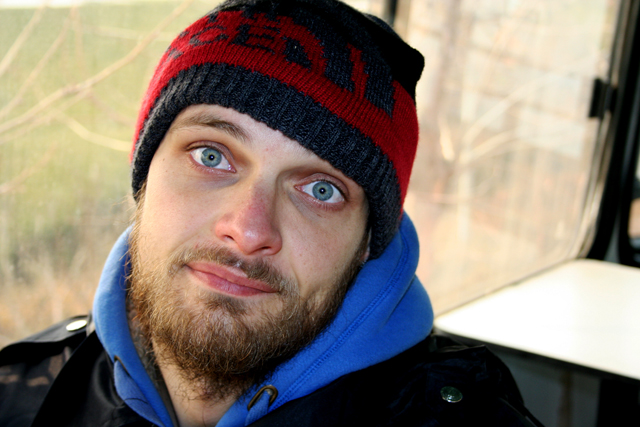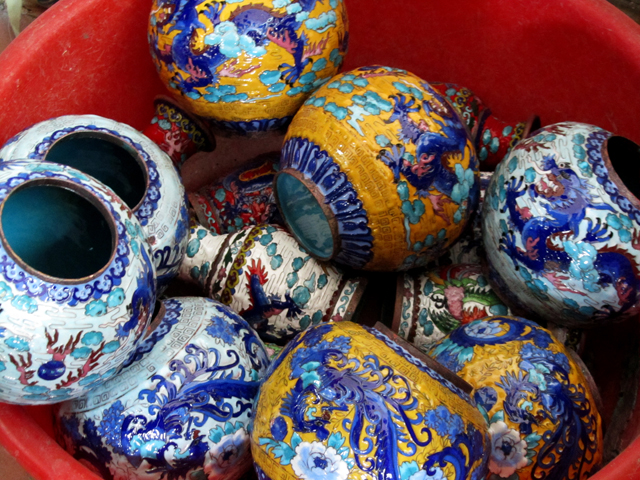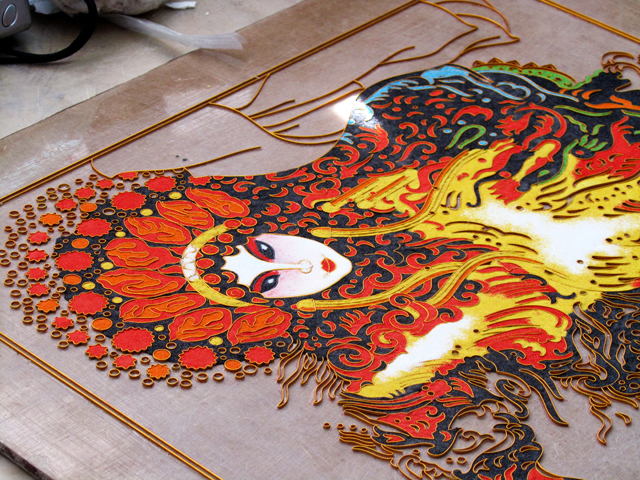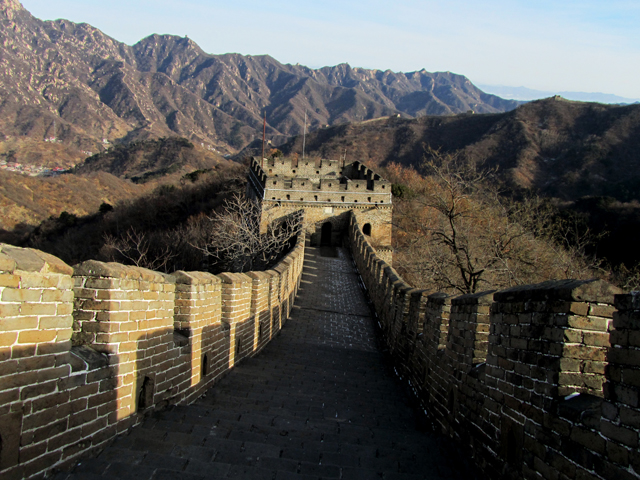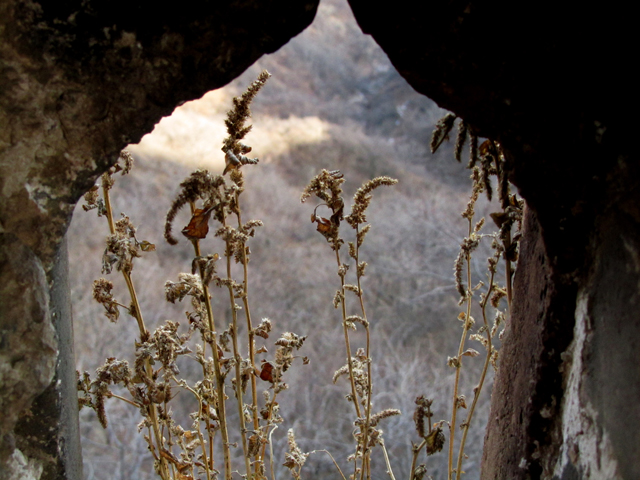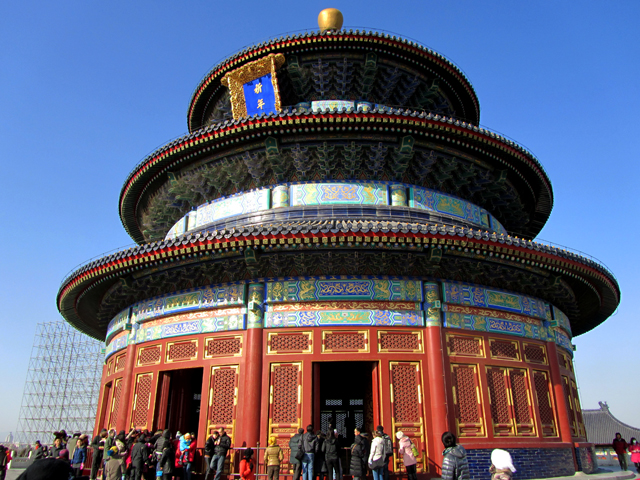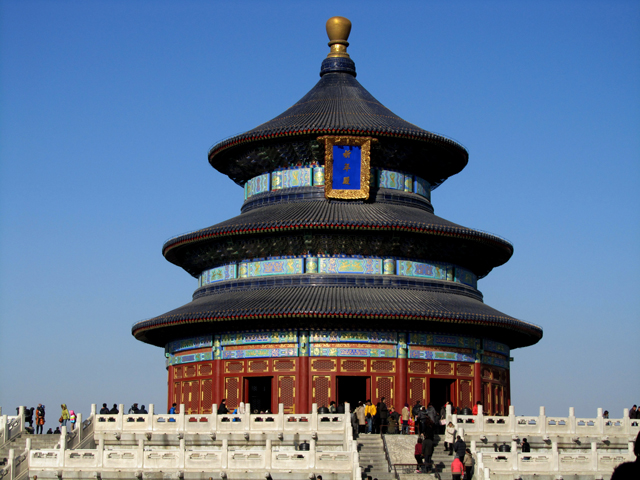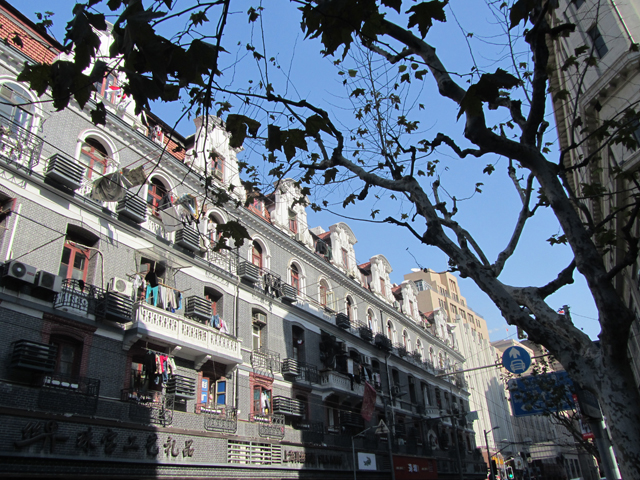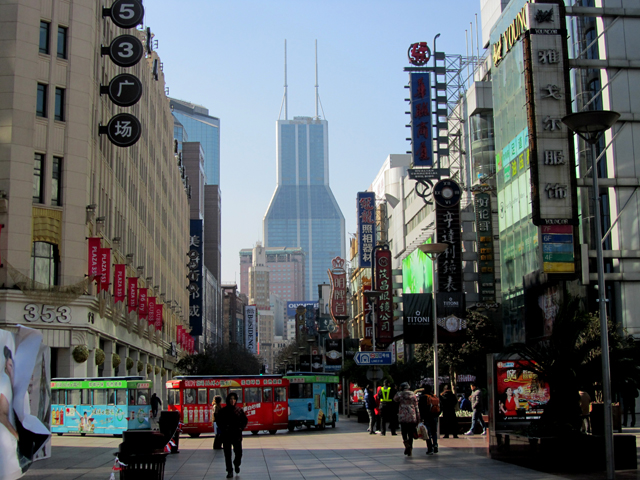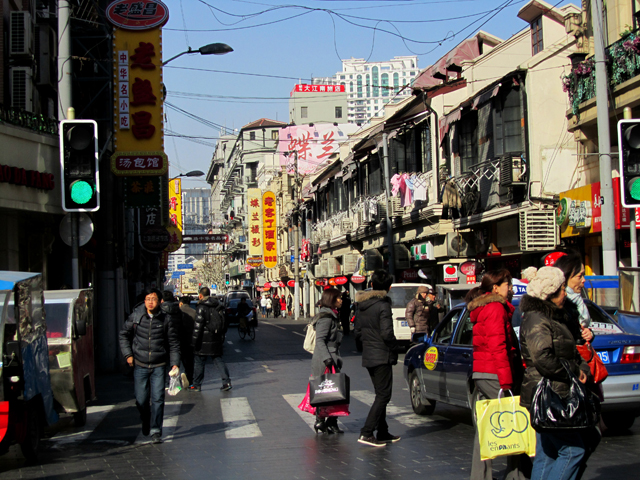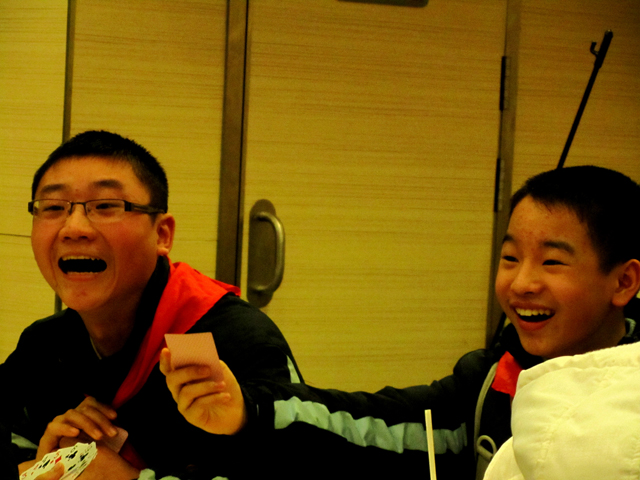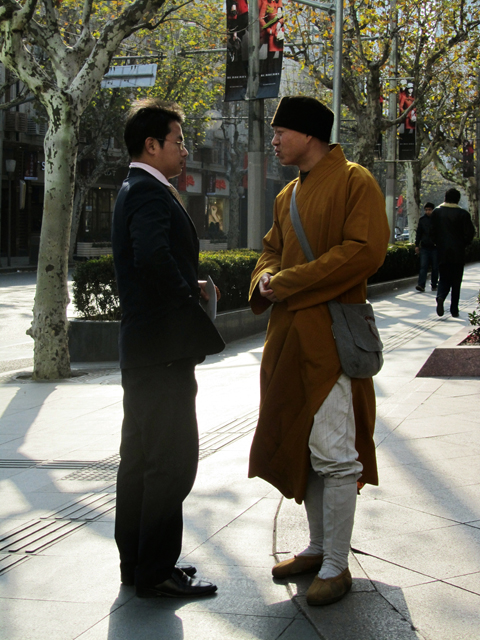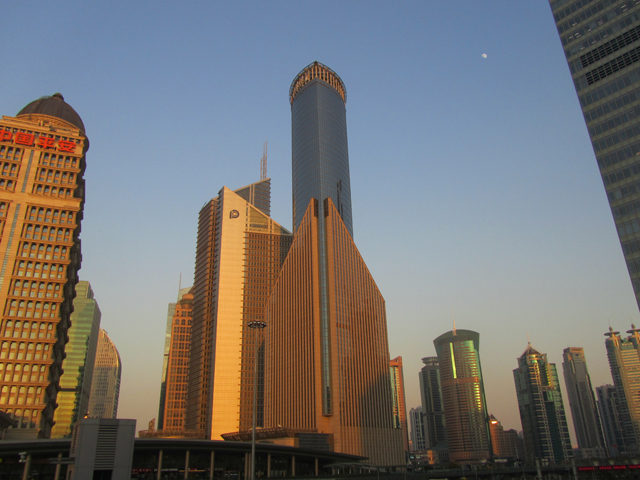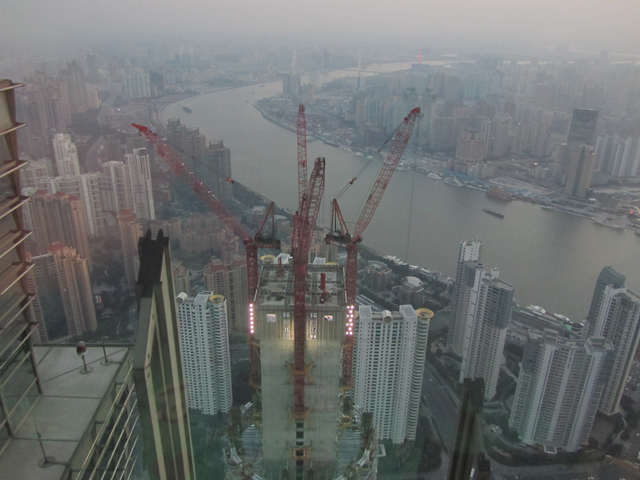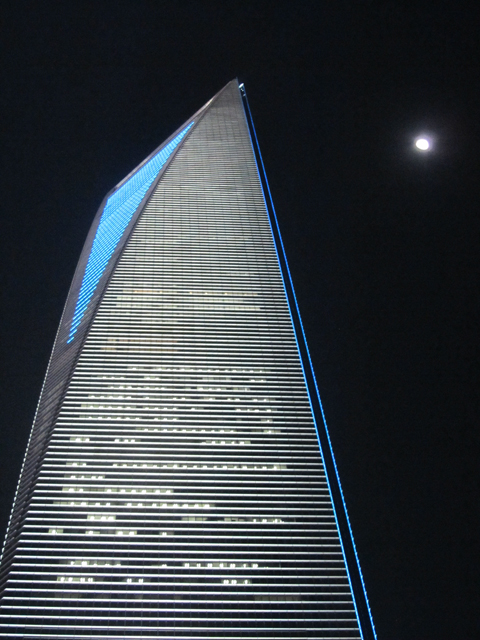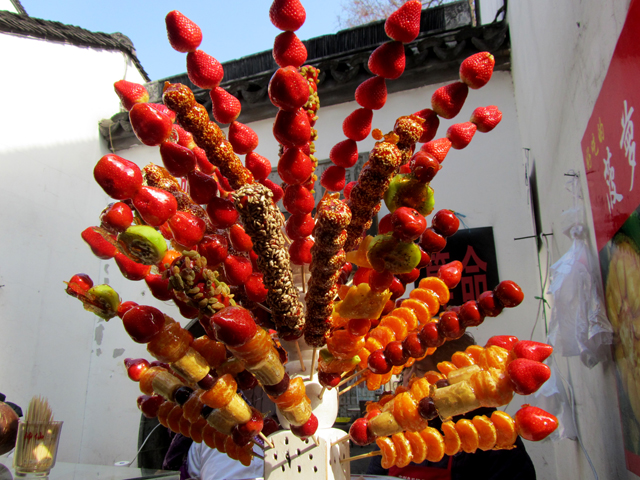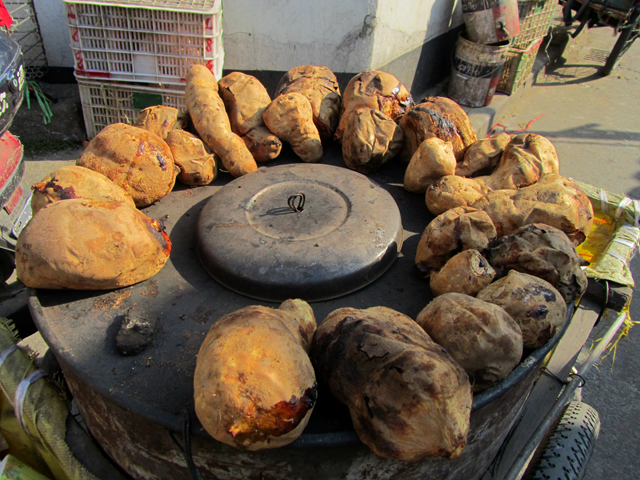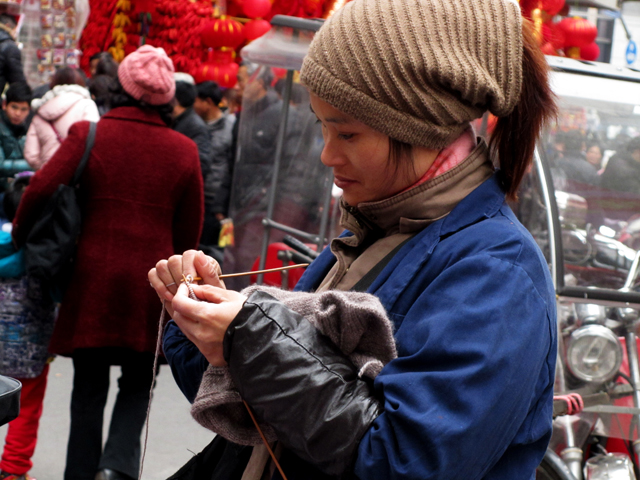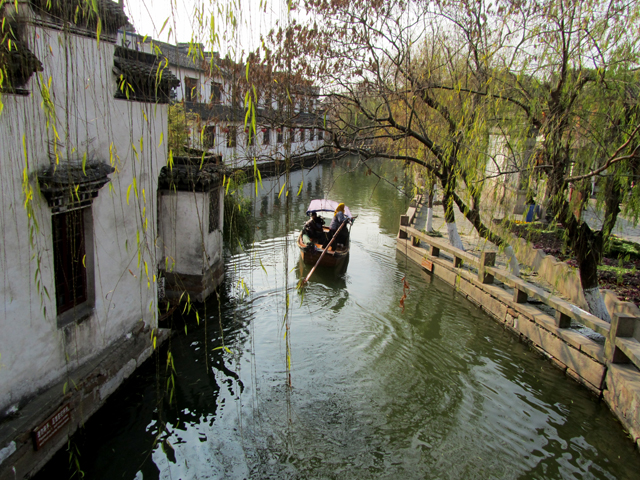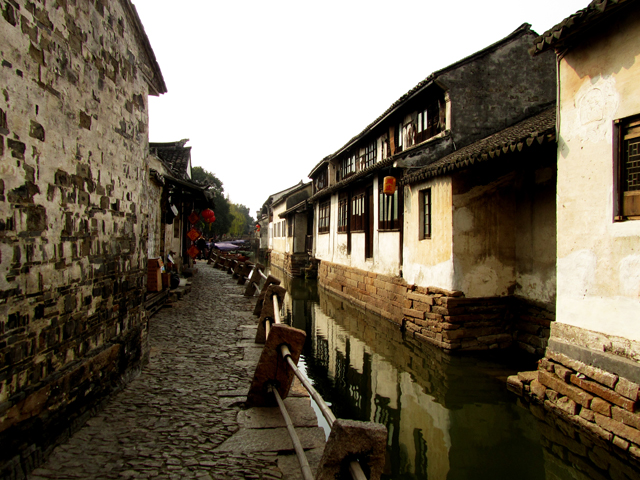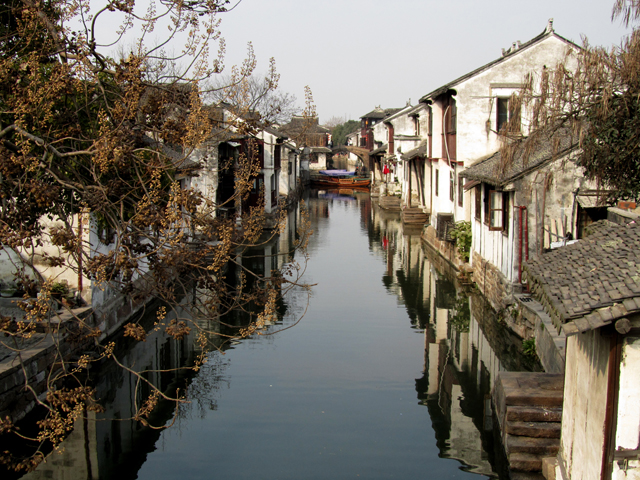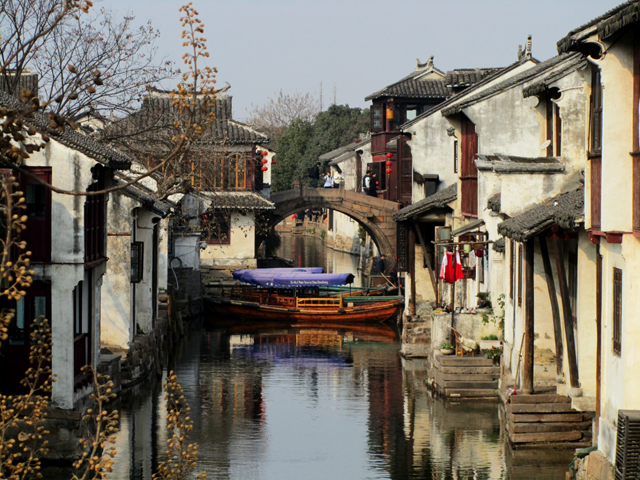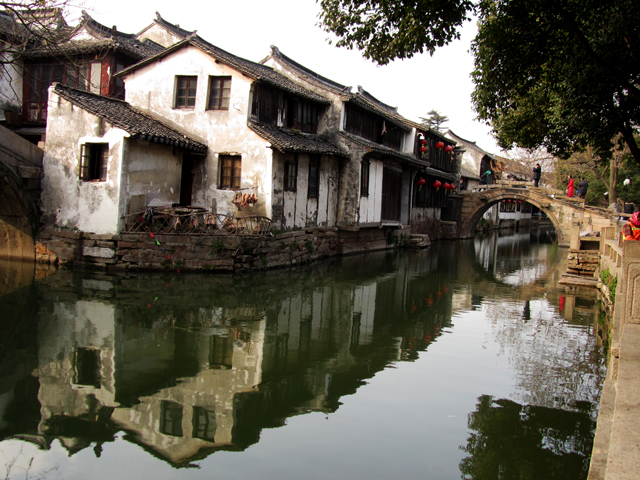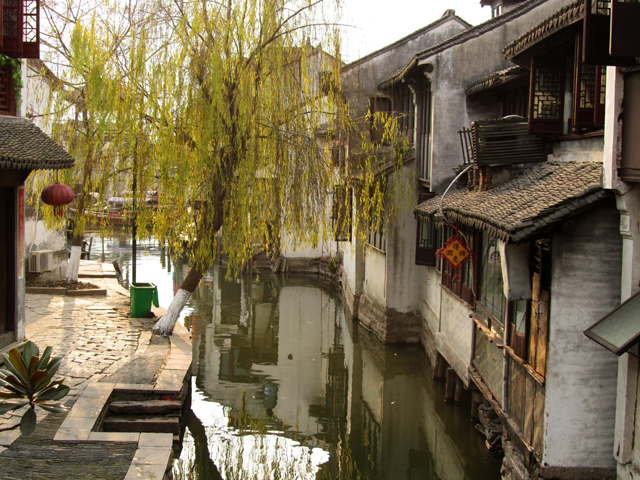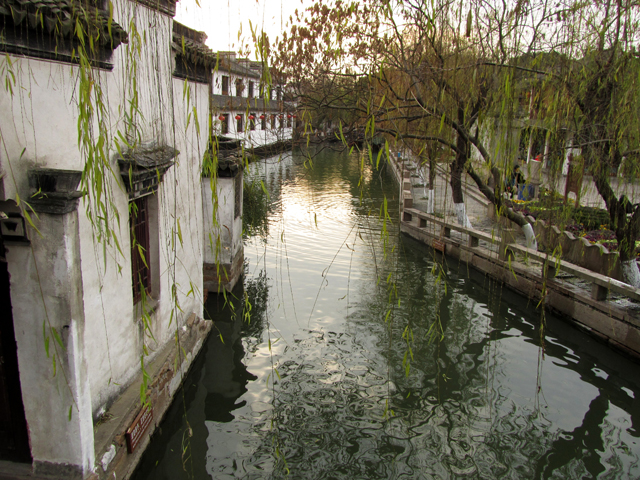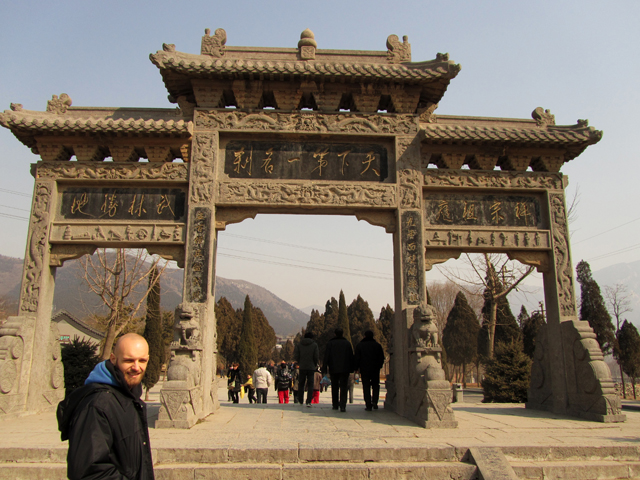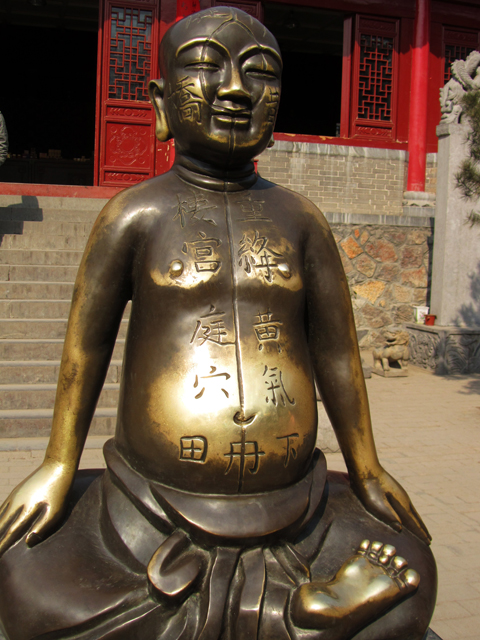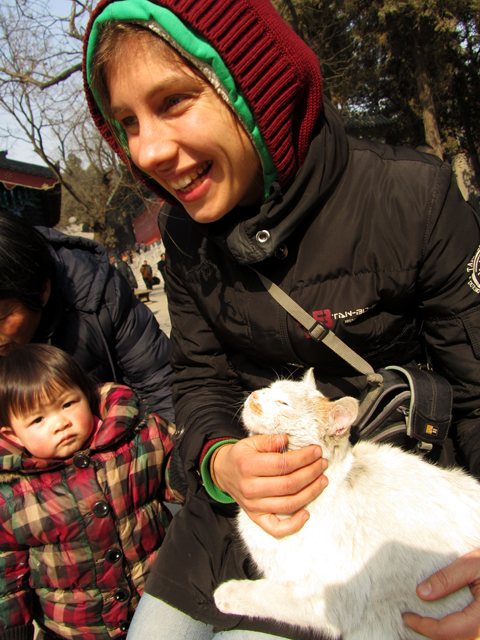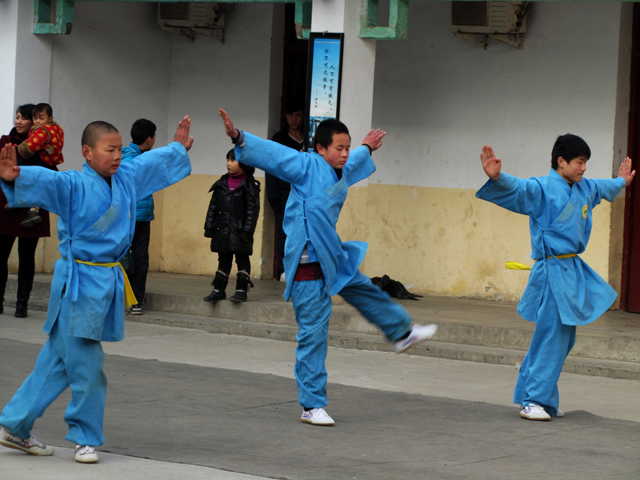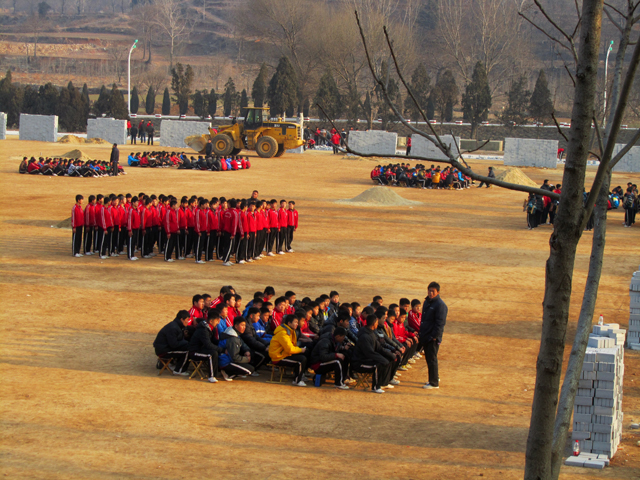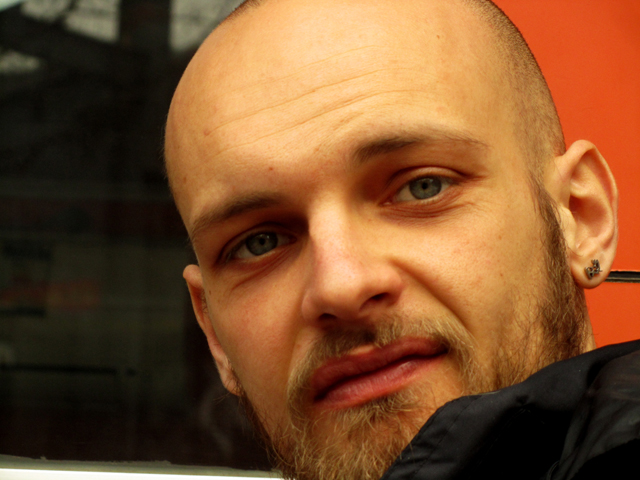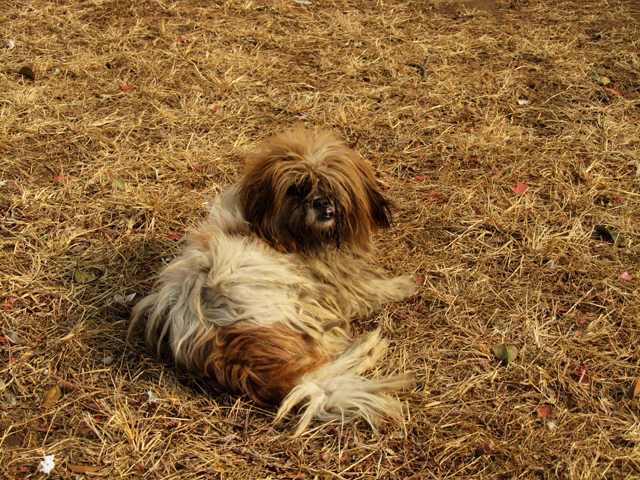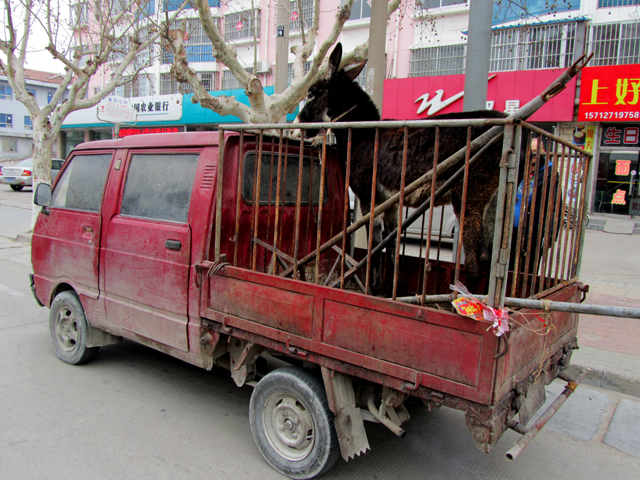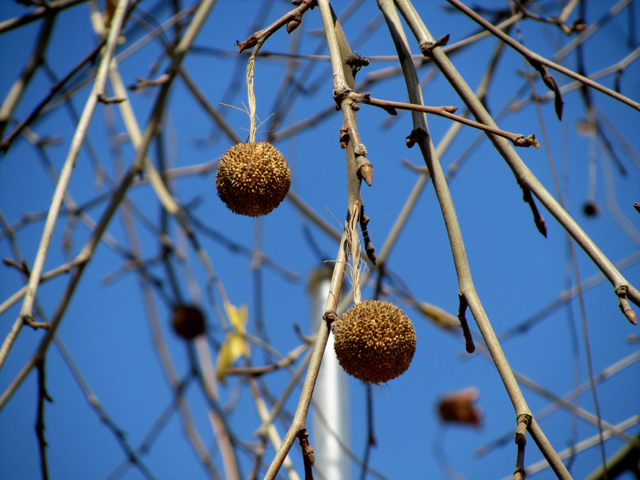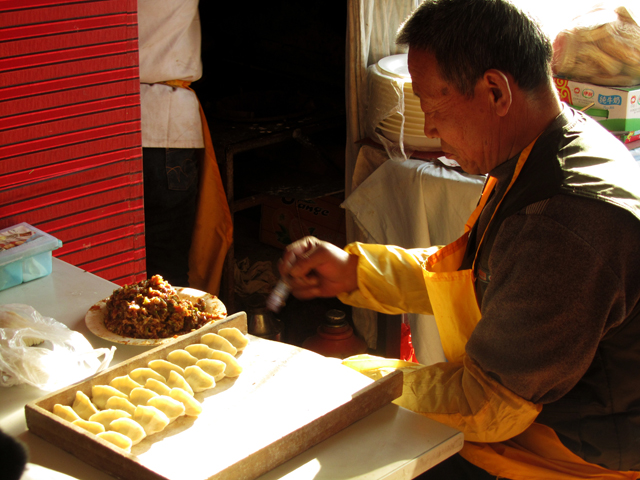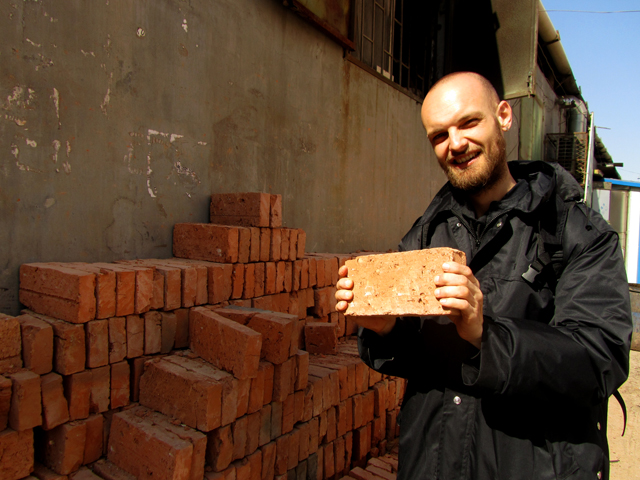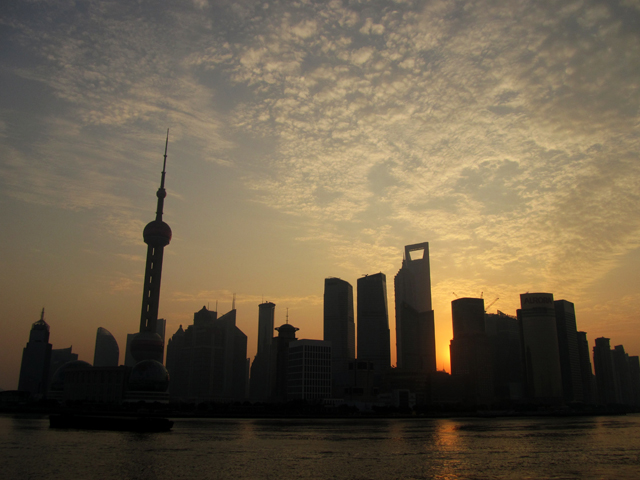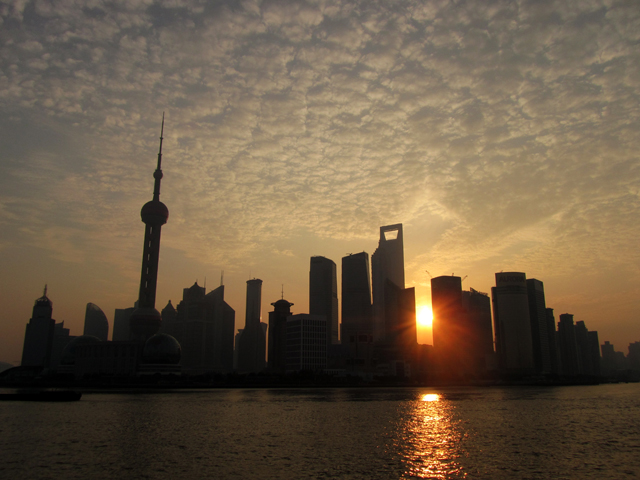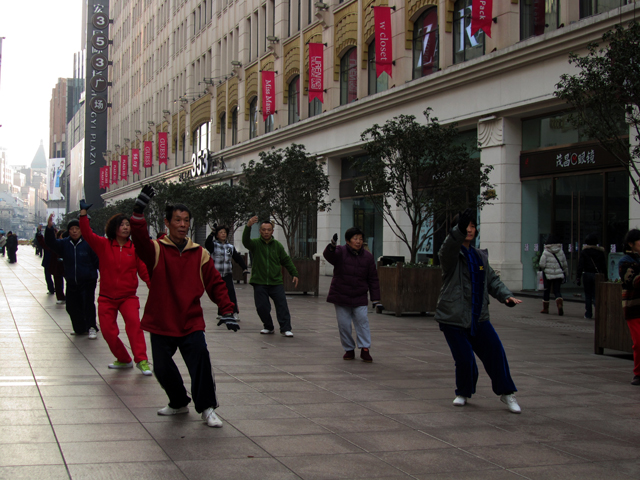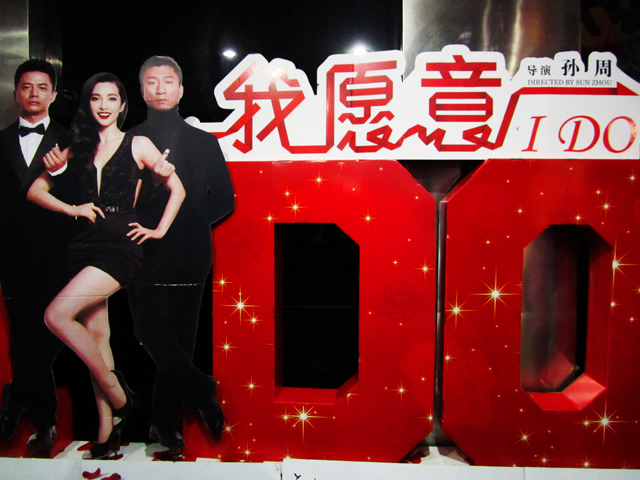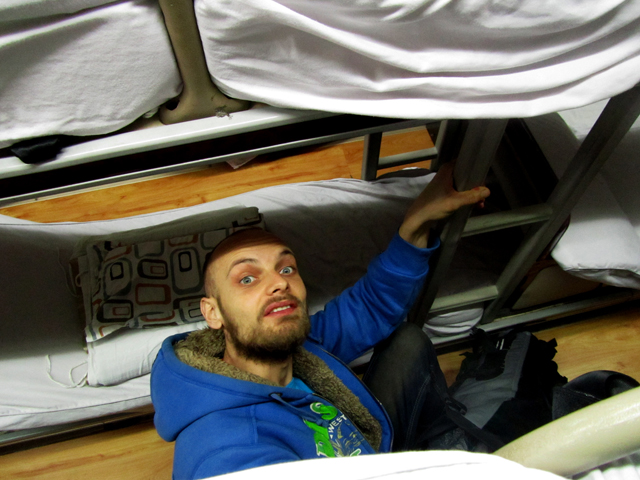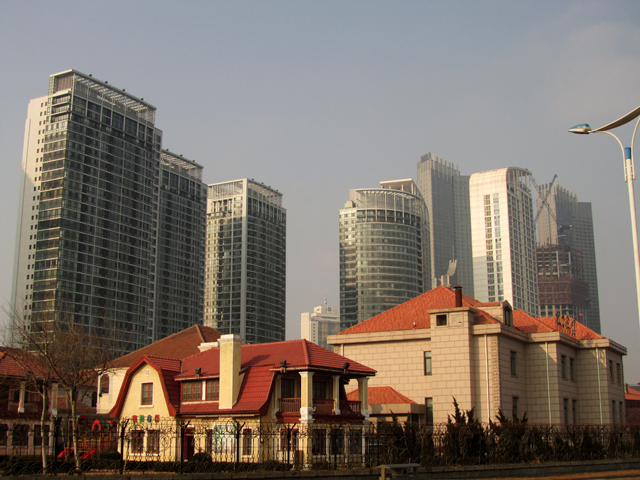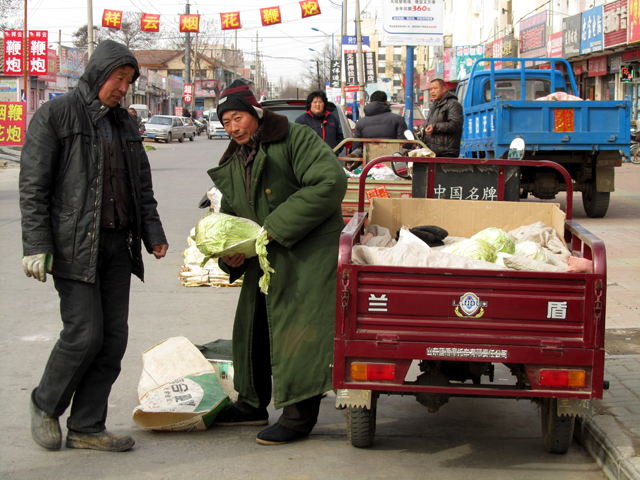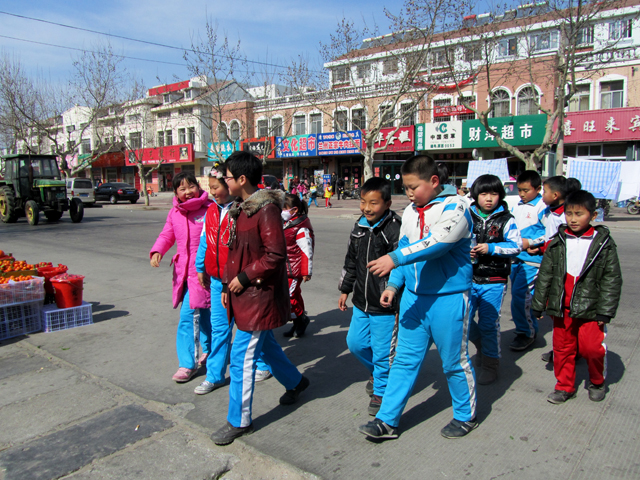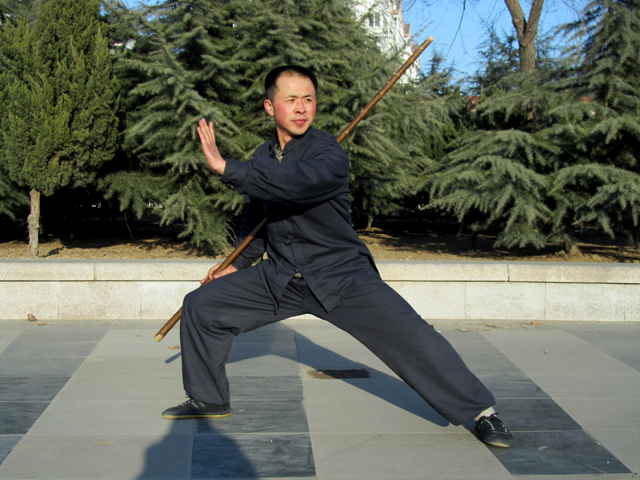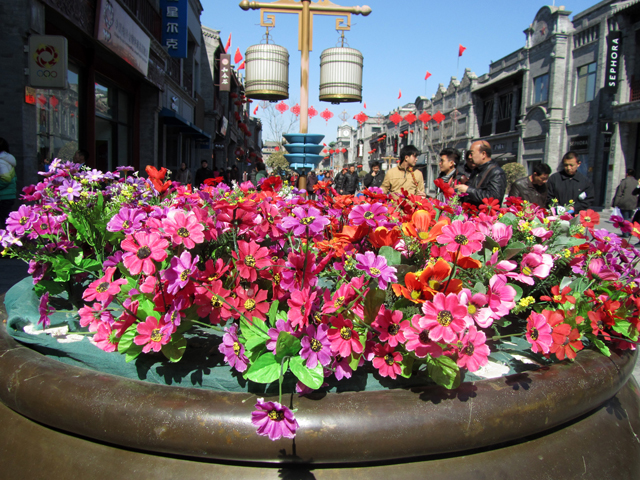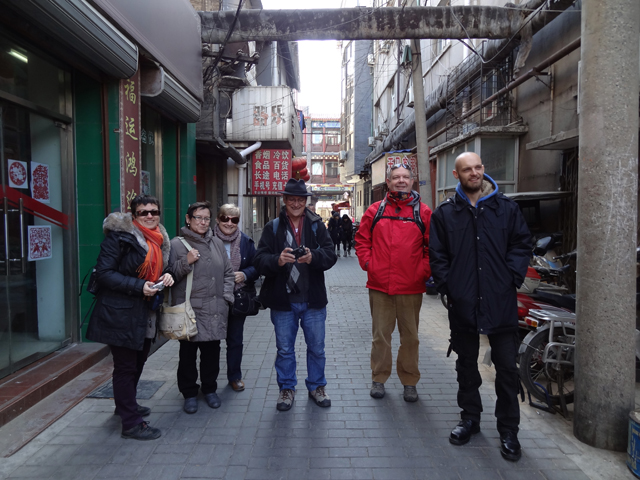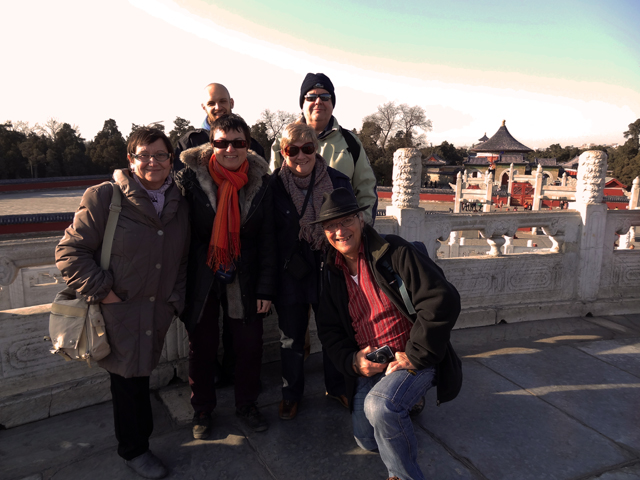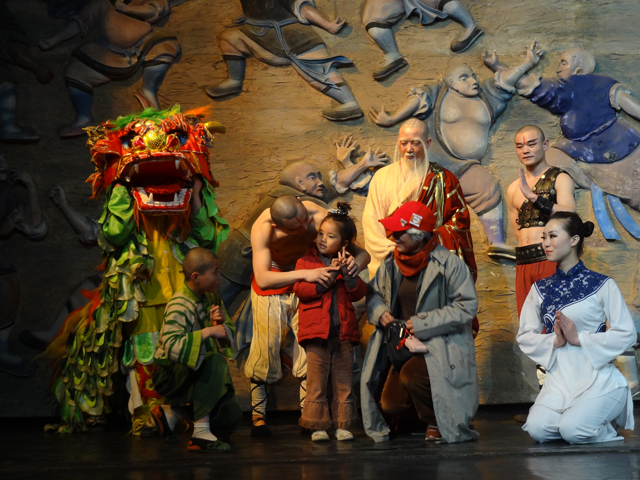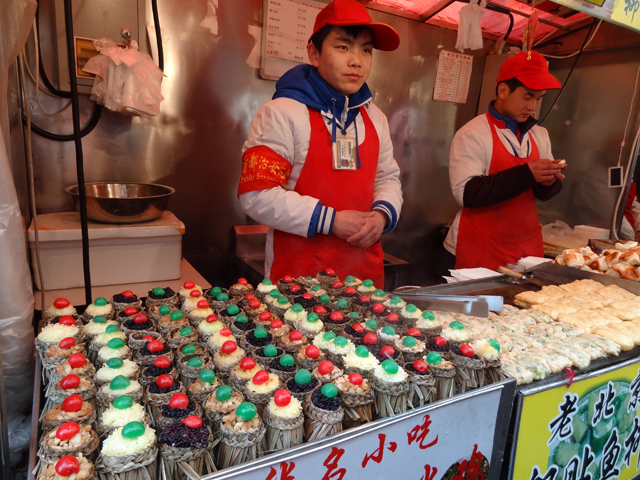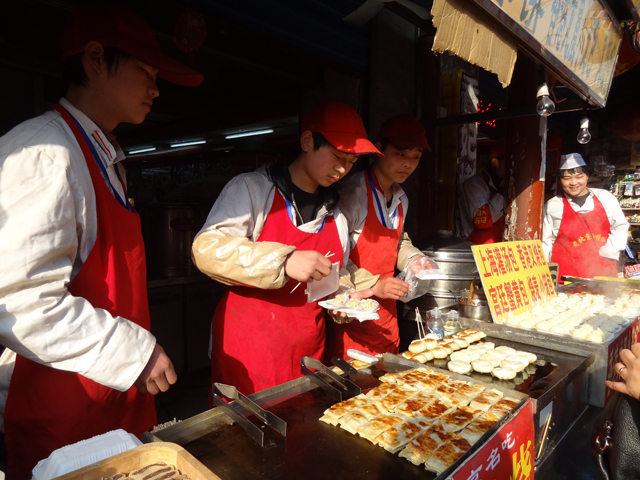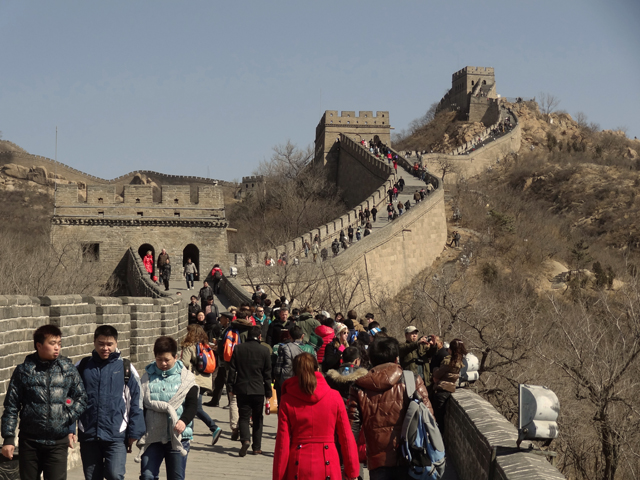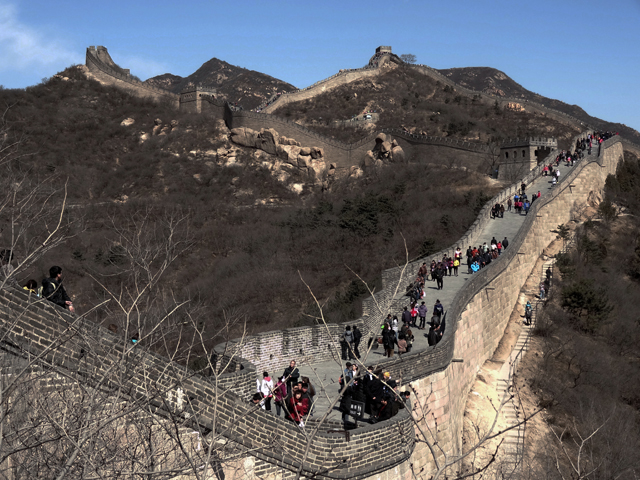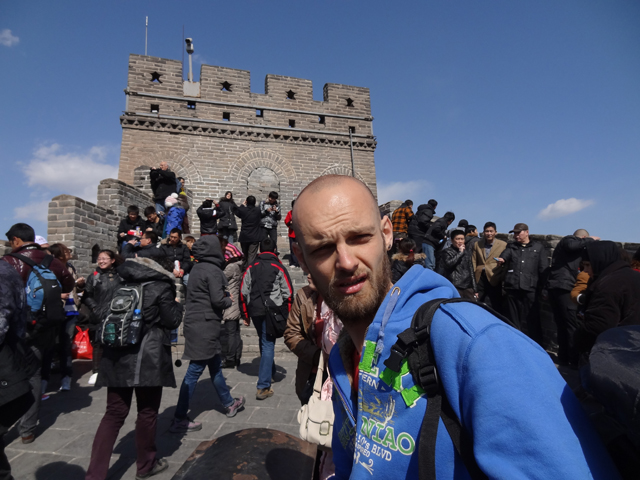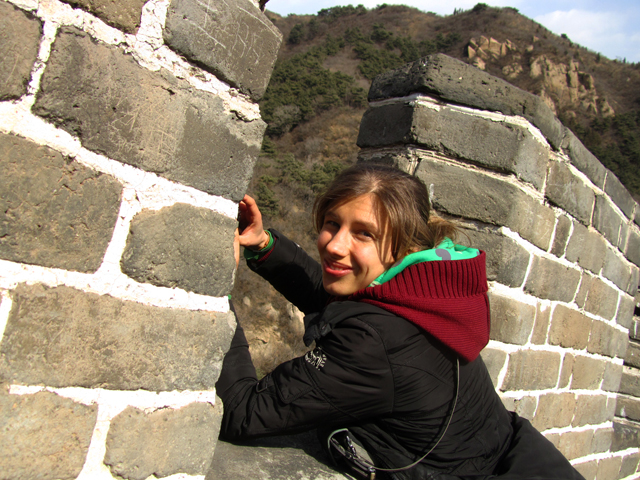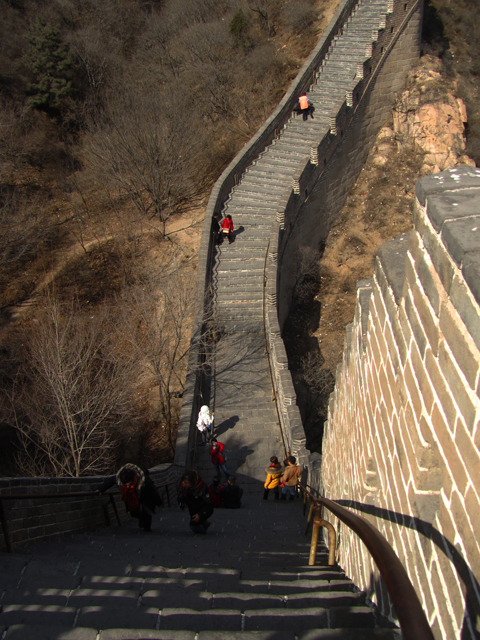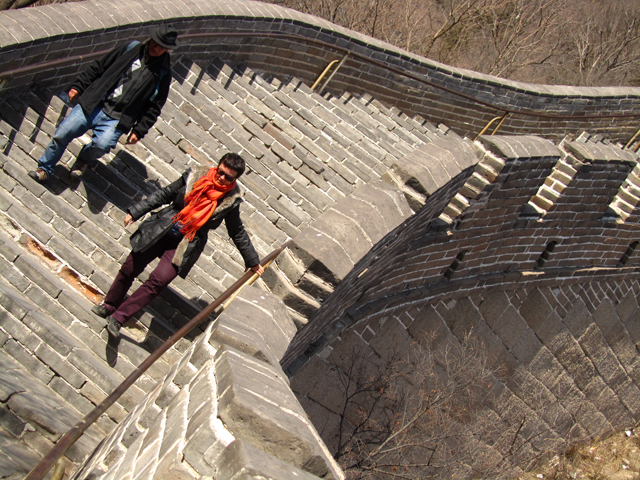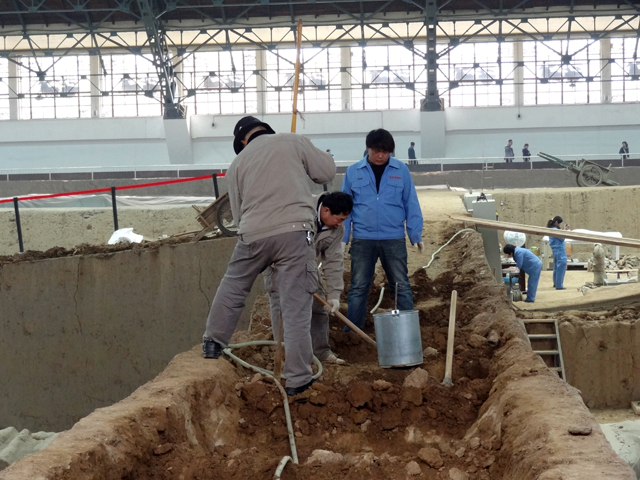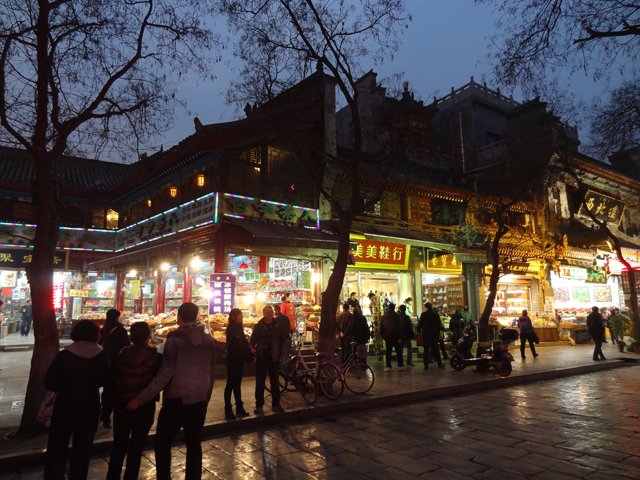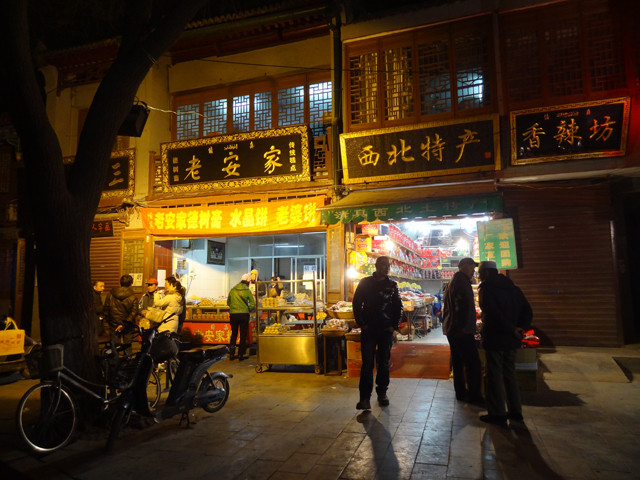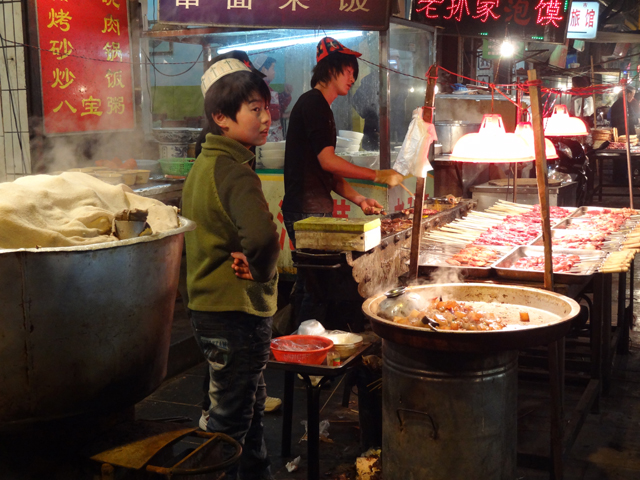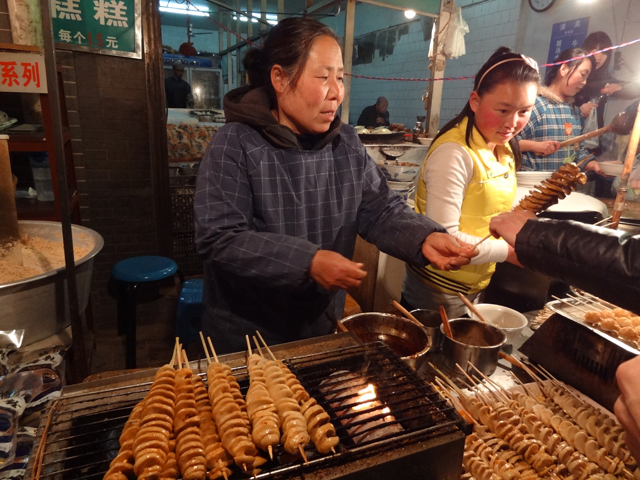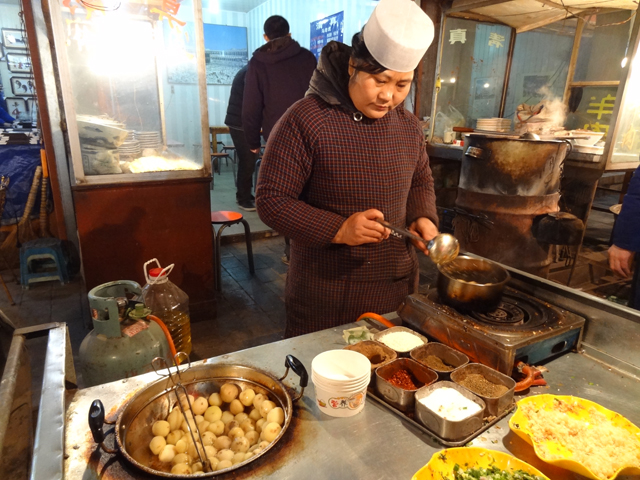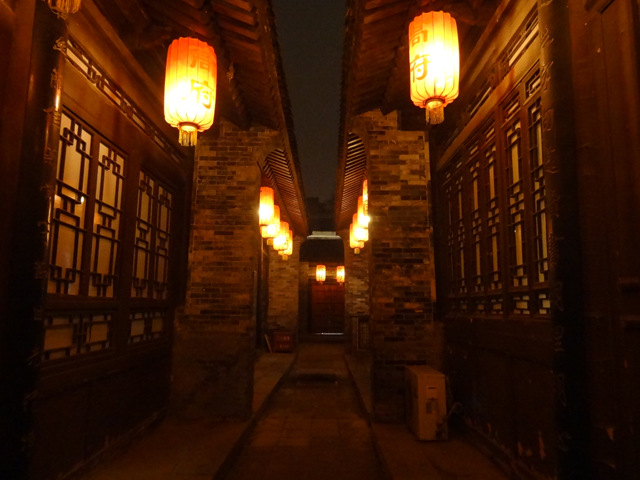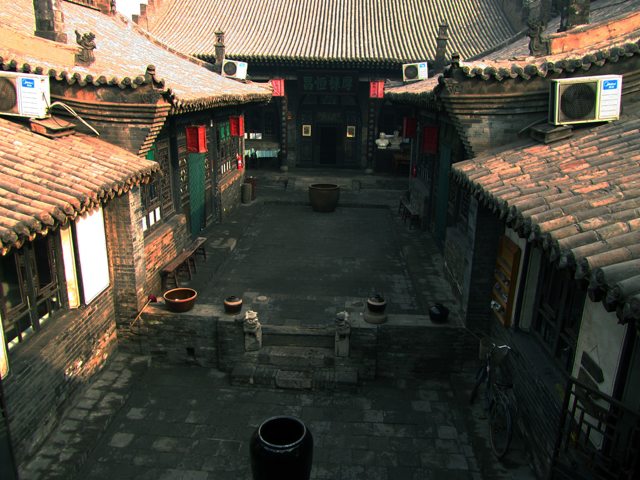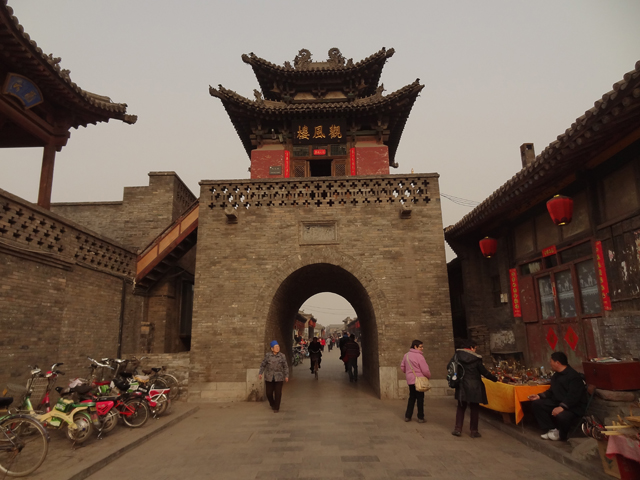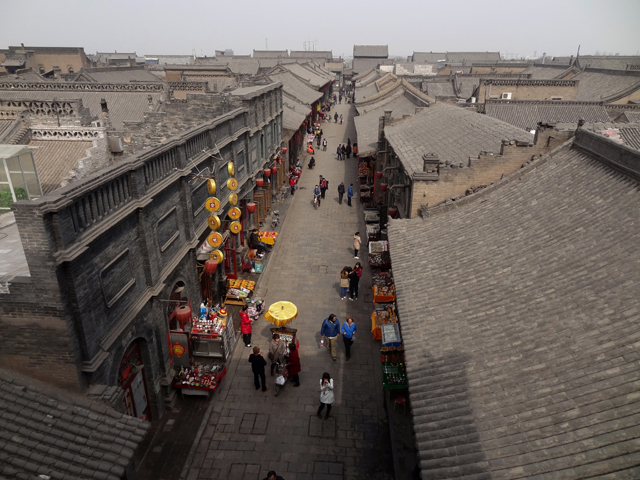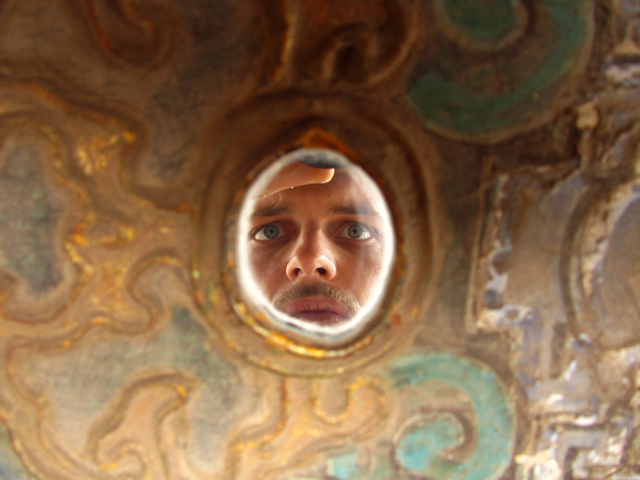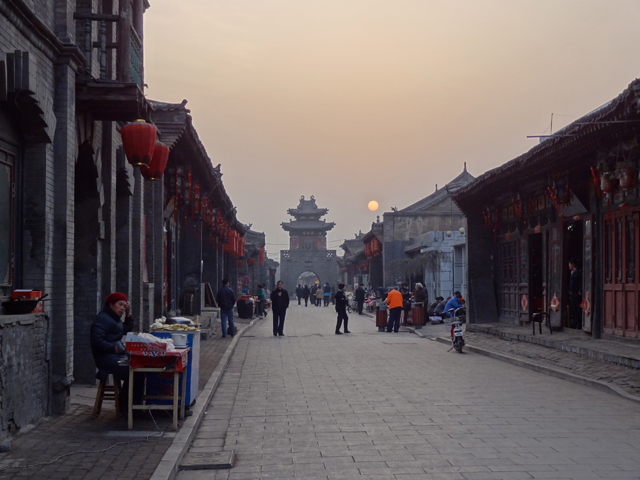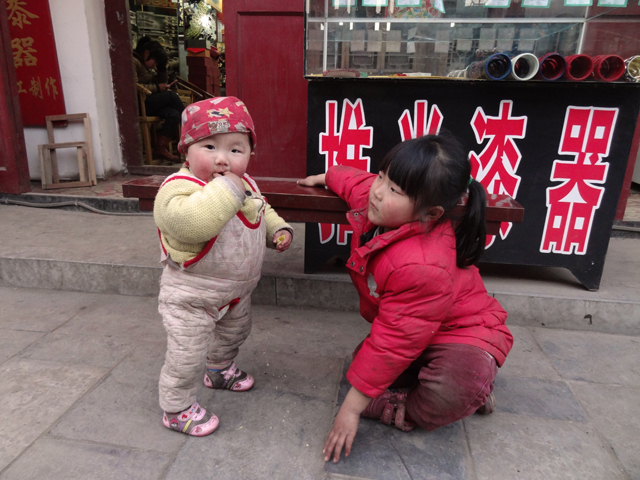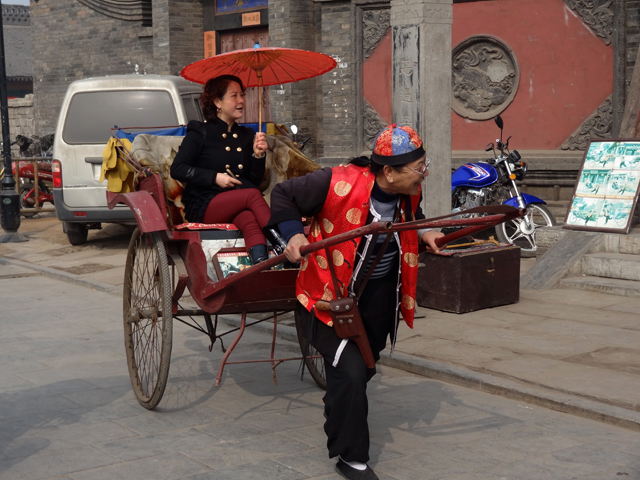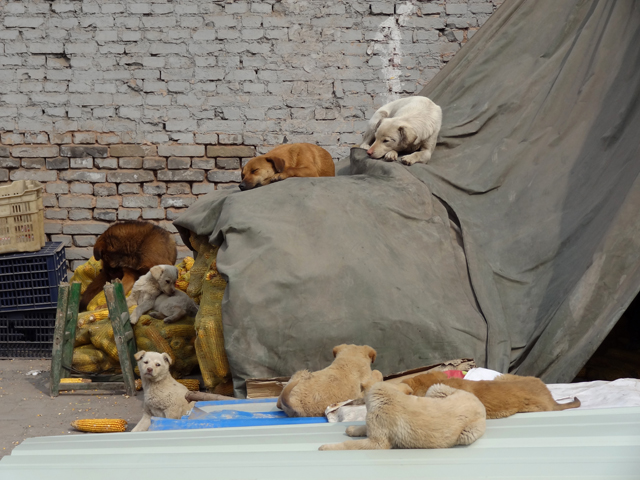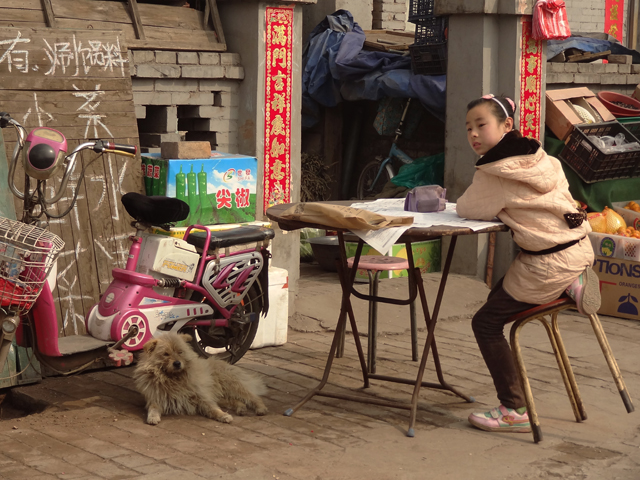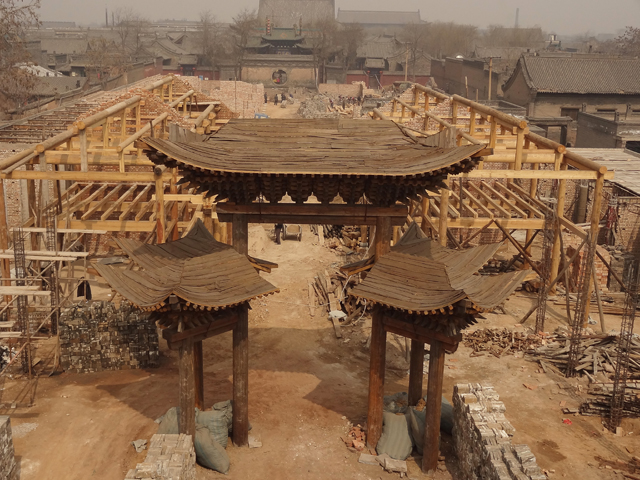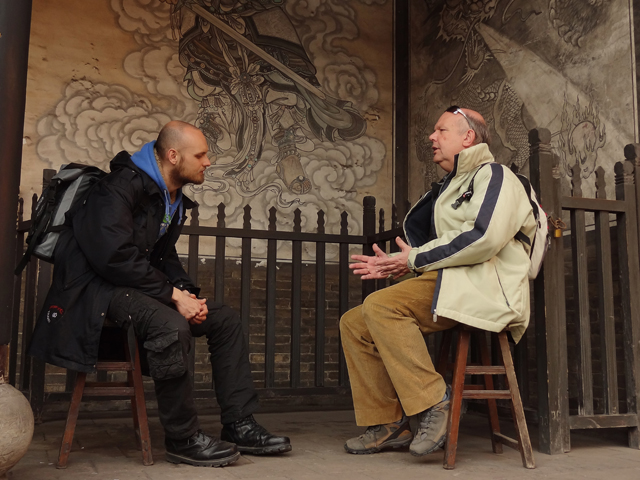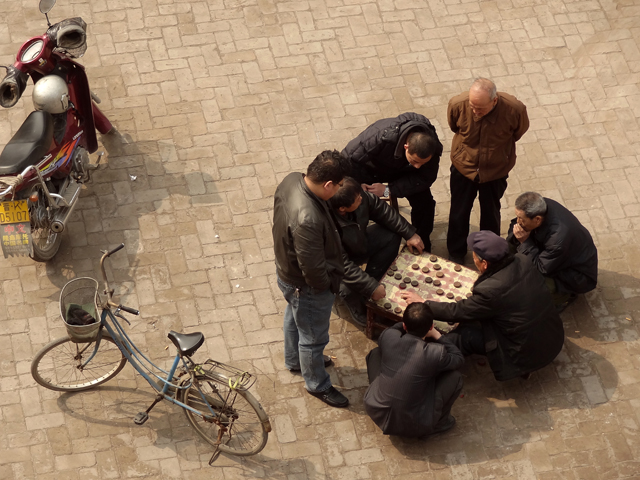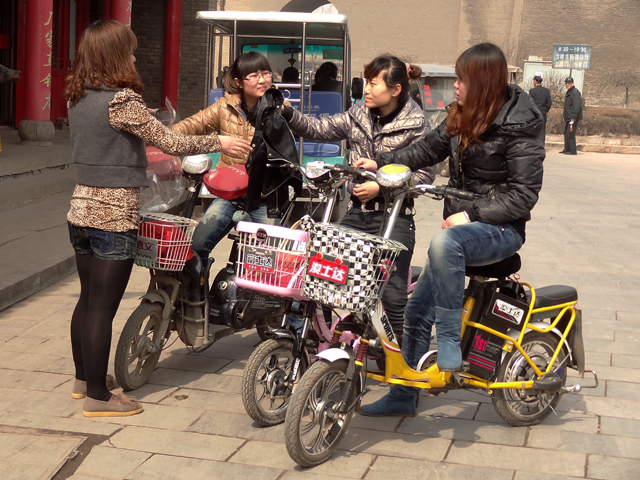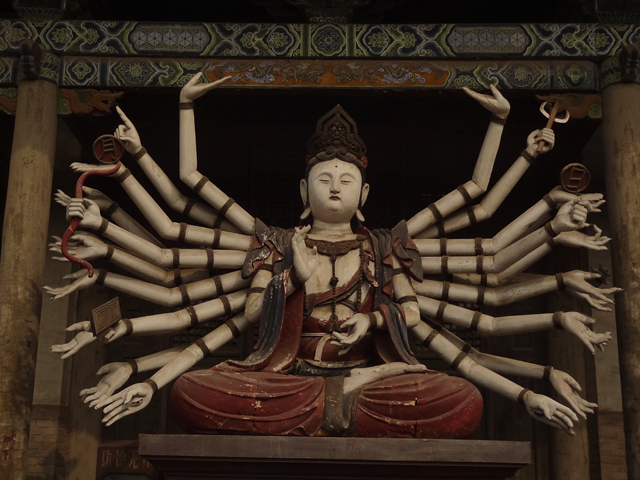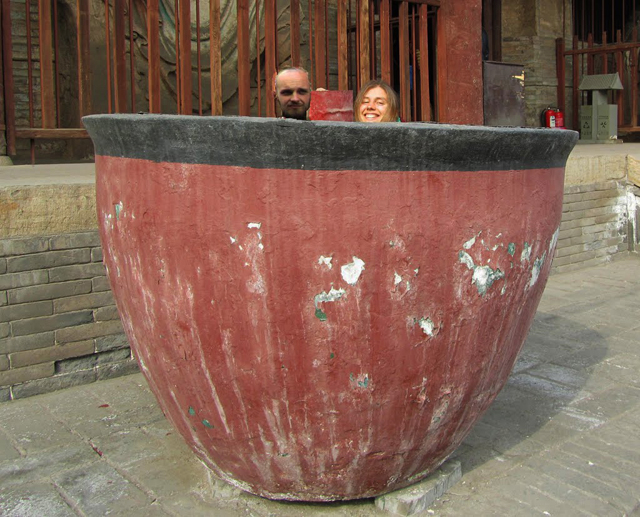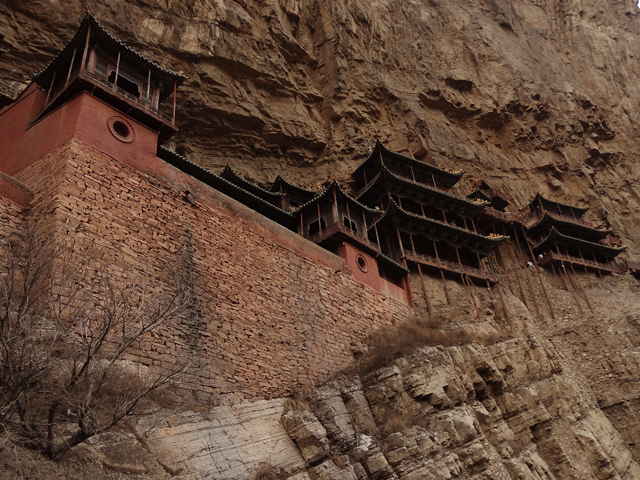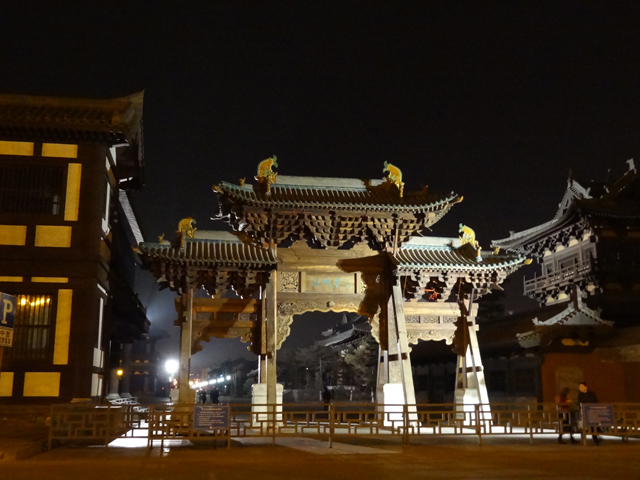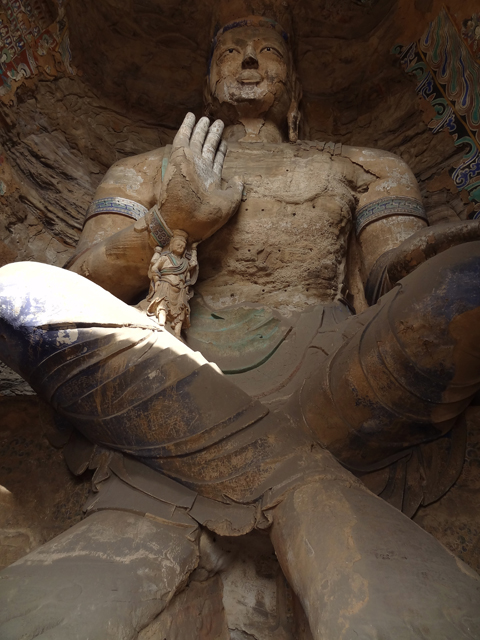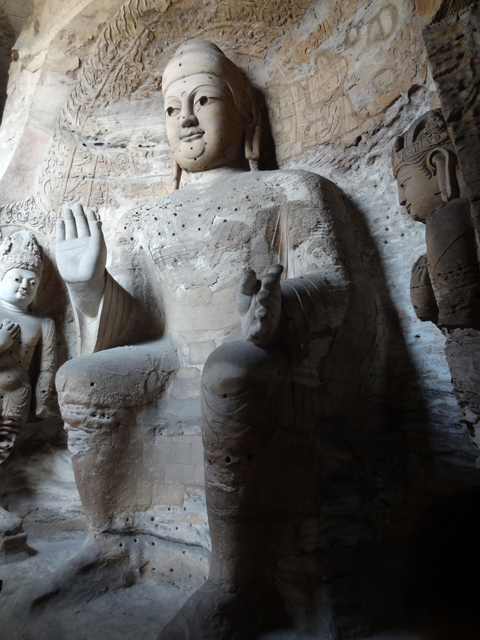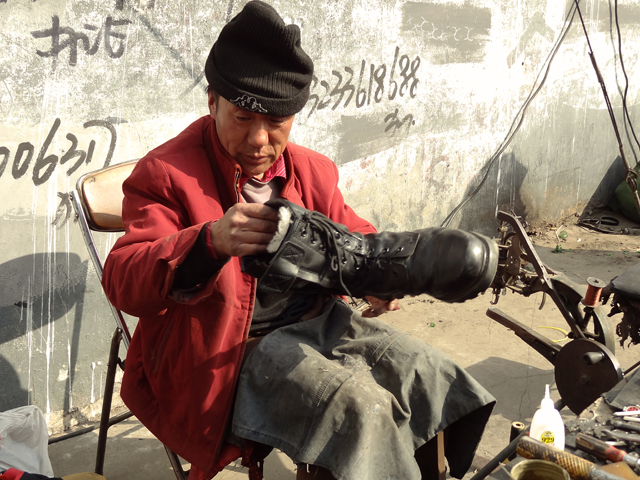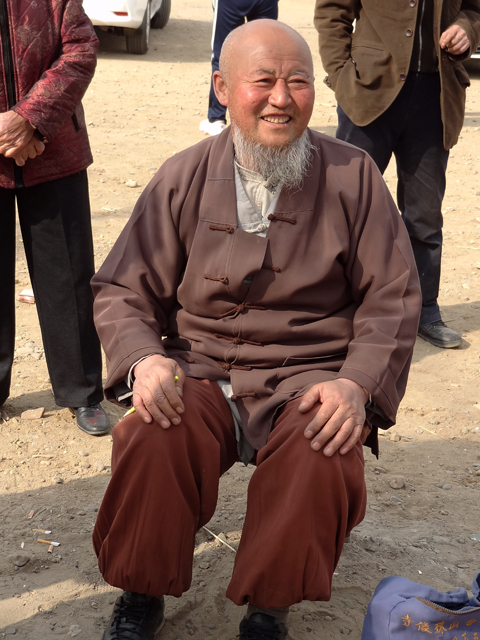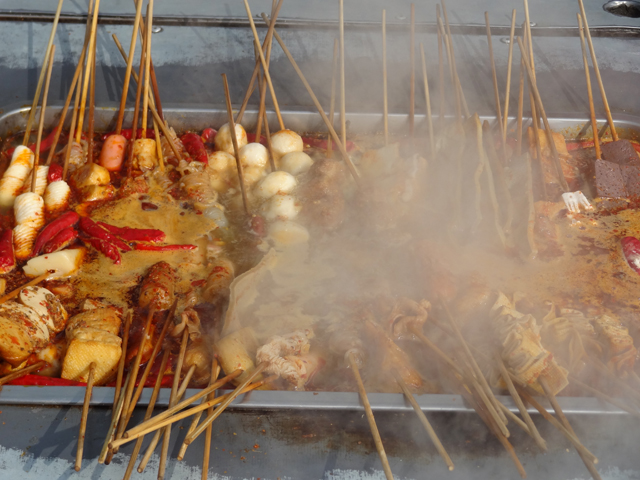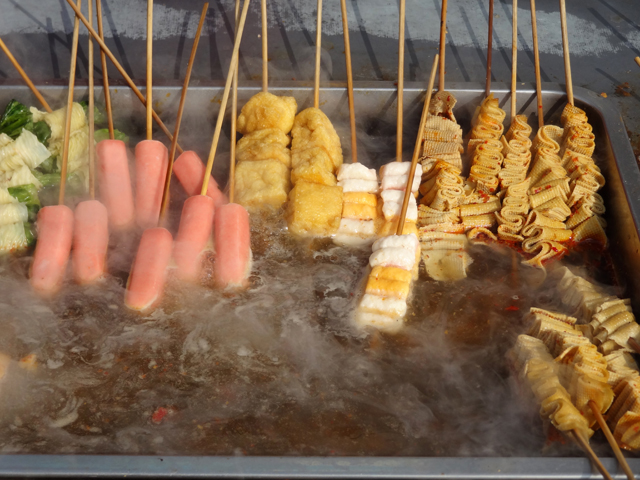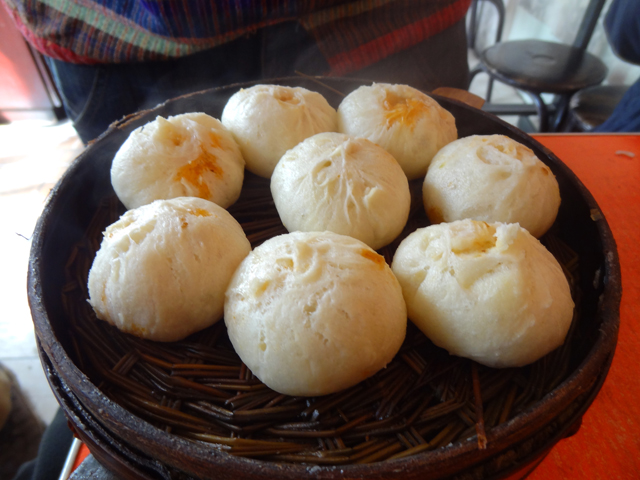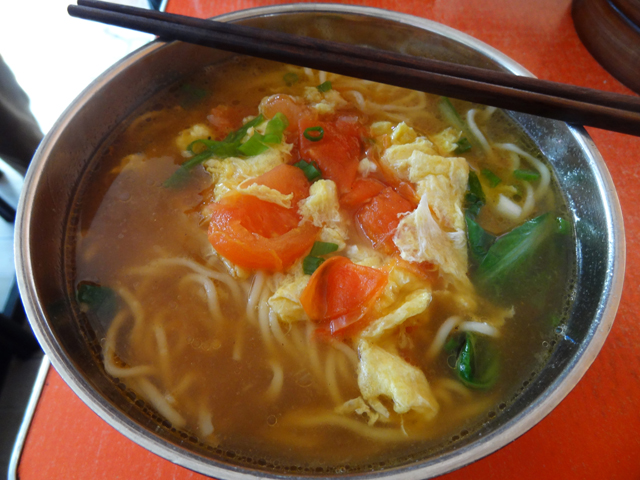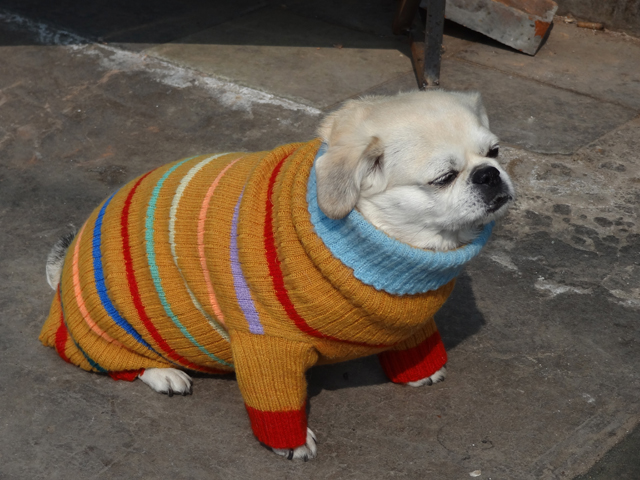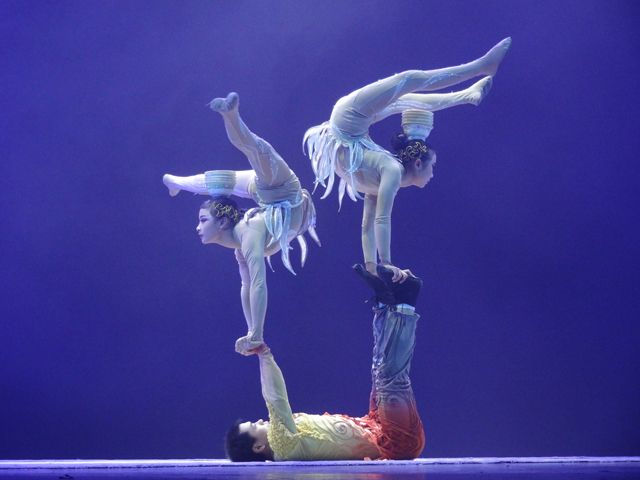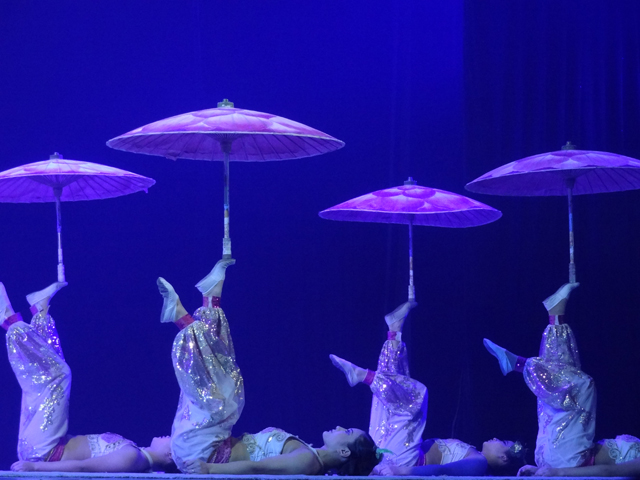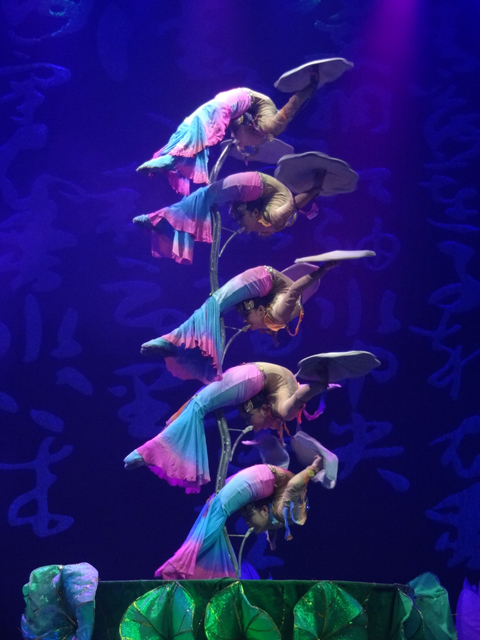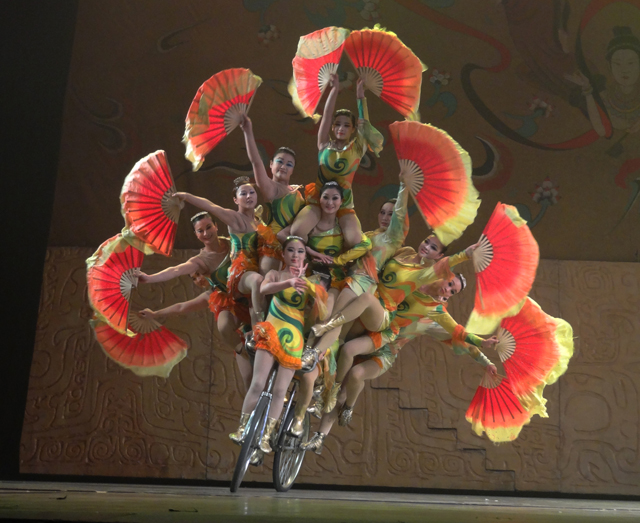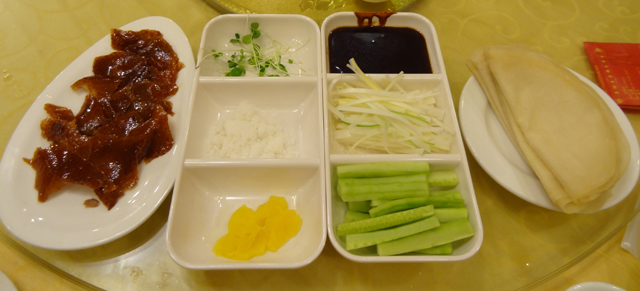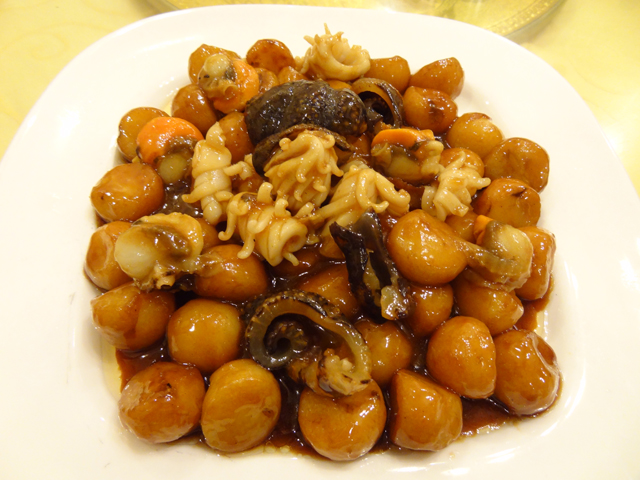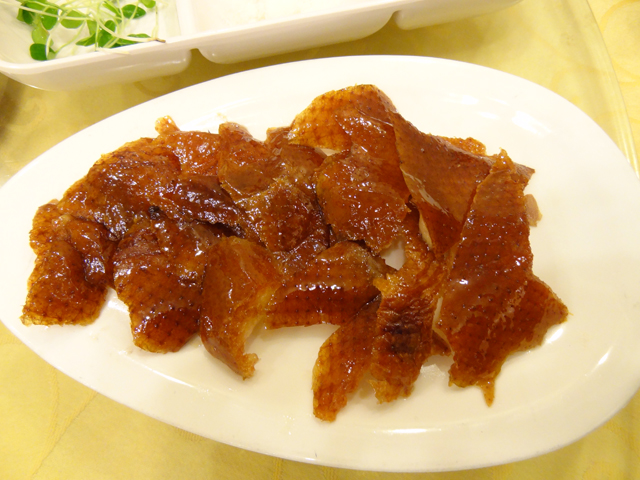Last months in China - living, travelling and applying for visas
This post is a really hurried update about the last three out of the six months we spent in China. Time flew, but in a good direction: we learnt enough kungfu forms to be able to continue independent practice, grew quite comfortable with Chinese (can have various dialogues, and even started reading books with a dictionary and watching movies). In fact, this half a year in China gave us so much inspiration for learning that we added even more things into our happy routine, for instance doing splits and playing erhu (two-stringed Chinese violin).
Needless to say, it's next to impossible to maintain such a list of "healthy hobbies" with a busy job or travelling schedule but back at home we are going to try. For the time-being we simply need to figure out a special "hotel" version of all the kungfu forms, which basically means that we have to do them in a tiny space, replace multiple wide steps with a single narrow one, use hangers and other similar things as weapons and pay extra attention to chandeliers (which apparently don't agree very well with our sword and stuff forms).
Apart from this intensive self-development course, we spent almost a month of our time in China travelling twice along its highlights route with Jordi's famly: around Christmas and New Year - together with Jordi's mum, and in March, at the end of our stay in China, - with Jordi's dad and his wife and friends. By now we travelled this highlights route 3 times, each time with small variations, so we have done in total 4 visits to the Great Wall, 3 visits to Shanghai, 2 visits to the Forbidden City and 2 visits to the Terracotta Army.
Now here's very briefly the summary of this travelling time. ("Briefly" and "hurriedly" might remain the main adjective applied to this and a couple more posts, as tomorrow we are leaving for Brazil to start our South and Central America part of this rtw trip and this travel diary's calendar is still in December 2011 and missing a total of 3 countries!)
Travelling China highlights route with Joaquima:
So, in December last year we came back to China from South Korea for our second three-months stay. In Qingdao airport we met Jordi's mum who came to visit us in China and was the first person to use our "guiding services" in Chinese - the new language we added to the "jooiworld guiding service pack" which by now has been offered and used in English, Catalan/Spanish, Russian and Chinese :-). After celebrating Christmas together with our teacher's family and the rest of many (!) Christians of Laixi in their improvised church (our teacher's sister's house), we spent a couple more quiet (training) days in Laixi. Then after a day tour around Qingdao we took the white bullet to Beijing. As any Beijing-in-two-days visits, this one started with a visit to Gugong on the first day (our personal visit counter for this attraction went up to 2, although this time it was sunny so we didn't have to take all our photos from beneath the roofs of all those ancient palaces). This time we also took the audio guide which turned the visit into a rather memorable experience not because of how striking the information was (it was more or less same as what we could read on the wooden explanation boards), but because of how oddly dissynchronized it was with our actual visit due to the device's malfunctioning GPS. For instance we'd make a stop at a WC and the device would start telling us something like "And now you are facing a huge marble wall with nine dragons". We'd find the dragons later but at that time the device would already be telling us about the habits of the wife of a specific emperor and listing the artifacts we could see in her room, which we would find later on, and so it continues... In short, it was a kind of mental puzzle where we had to match pieces of information we'd already heard with an actual scene we'd see later. On returning the guide we got what looked like a standard reimbursement application form and half the money back - I guess based on the multiple cases of tours similar to ours, this is their estimate of how much we "actually consumed" of this fancy audio tour.
That day the New Year passed us by very silently, as it didn't want to disturb Jordi who got a really high fever exactly on December 31st, and because China is not the country you should celebrate the western New Year.
Tour detour:
Next day we did something we knew we'd regret but which was one of those cases of choosing the lesser of the two evils: we took a tour to try to see more places than what we could relying on public transport. The tour would allow us to visit the Great Wall (Mutianyu section), the Bird's Nest and the Temple of Heaven in one day. In reality we ended up attending all sorts of shops disguized as crafts factories for half a day and visiting only the Nest and the Wall. Our guide who they put next to the driver only to ensure that he delivers us at all the shopping places (as these were the only places in which he was leaving the car) was laughing in the morning when we told him that we'd pay him only half of the total amount upfront, then his smile started to decrease when we started to ask him difficult questions about exactly how many "crafts centers" he wanted us to see; he smiled even less when we told him that we'd visit only the ones that we were warned of (tea and silk shops and enamel factory); he totally stopped smiling when we told him at a massage centre that - surprise, surprise - a massage for our "strained feet" was a much lesser priority for us compared to visiting the Great Wall on our trip to Beijing; and he was outright rude when we told him that because for half a day he drove us around shopping instead of sightseeing places and that's why we didn't have any time left for the Temple of Heaven we'd leave the pay also at half. After a talk with his manager we paid only a bit more on top of the half we'd paid in the morning - the smile of our guide was never seen again...
And here are some conclusions about taking tours in Beijing and in general:
1) Don't ever do it if you can avoid it - for the tour agencies, guides and all the people in this industry you are just a money bag. (I think that this total absence of human attitude develops in them through some kind of virus that affects people of this profession.)
2) If you are really pressed for time and have to see 3-4 remote places in one day, consider hiring a private taxi before taking a tour (we simply didn't have time to research this option that time in Beijing).
3) If you do take a tour, agree clearly on how many shopping places you have to visit and how much time it would take. If your guide starts throwing in more "exciting" options, be firm and if necessary ask to talk to a manager.
4) This one is the most important one: for small private tours NEVER PAY THE ENTIRE SUM UPFRONT. Insist on paying half even though they'll tell you it's not how they do things. If they don't accept it, chances must be really high that they don't expect you to be satisfied with the tour at all, so it's in your best interest to leave anyway.
5) If you do end up with controversy, be very firm. Sadly enough, people in dishonest businesses many times take your politeness for stupidity and they understand only the money language, not gentle phrases like "Ok, I'll pay you but please tell you manager that we were not happy with the tour".
6) But in general, simply NEVER TAKE TOURS. Most of them rob you of an opportunity to experience a place.
Our last visit in Beijing was the Temple of Heaven - the highlights for that visit, apart from the ever-gorgeous pagoda itself, would be Chinese people practising making fancy circles with long red ribbons and watching the reconstruction work where dozens of Chinese workers were walking in the three dimensions of a primitive metal frame at a really impressive height.
Next day was January 3rd. That morning we left Beijing for Shanghai to spend there the last four days Jordi's mum had in China. On the first one we first paid a visit to the Russian Embassy which was closed and would remain closed till Janruary 12th. (It turns out that this Consulate which works only 3 days a week during normal times, also celebrates the whole set of Russian and Chinese festivals and for some reason they do it for two weeks longer than in either Russia or China). The rest of the first day we walked the ever-busy area of the Bund, then went to see the Jing'an Temple, later took a metro to Pudong area and after watching an amazing sunset from the elevated pathways near the Oriental Pearl, went to see Shanghai in twi- and neon light from our favourite city-watching spot - Cloud 9 bar in Jin Mao Tower.
During the next three days we visited two of the many water villages around Shanghai: Qibao and Zhouzhuang. Qibao was definitely inferior in beauty but much livelier that Zhouzhuang because it had many more food stalls, souvenir shops and people. Zhouzhuang on the other hand although a much longer drive from Shanghai (main bus station) is truly beautiful - hopefully the photos below reflect it :-). The day in between the two water village tours we spent walking the area around the Yuyuan gardens.
That was the end of our first China highlights travelling session.
Time in between the two travelling sessions:
This period included the unique experience of the Chinese New Year, the food-centred celebration of which lasted for about two weeks and was closely followed by the Round Lantern Festival. This festival lanterns-wise didn't look any different from the Spring Festival, but contained one crucial difference - its main dish, which was sweet starchy balls with peanuts.
After that we settled for a while until our restless feet and an overcrowded super-uncomfortable train brought us to Shaolin, for a sort of pilgrimage to the legendary cave which is believed to be the cradle of kungfu. For those who are not familiar with the legend, here is just one version of it: a long time ago a Buddhist monk from India came to the area which is now Shaolin and started a monastery. In the 5th/6th century another monk from India named Bodhidharma came to the monastery and wanted to stay there but was denied entry so instead he found a cave nearby and stayed there meditating for 9 years. To rest his body in between the meditation sessions, in a trance-like state he started imitating the movements of the animals and came up with a set of exercises which became the base of Shaolin kungfu. Bodhidharma had a lot of disciples who copied him in his kungfu exercises and till this day the cave where he got his inspiration attracts a lot of pilgrims among kungfu practitioners. The youngest one we saw during our visit was accompanied by his mum and his master and was about 5 years old :-)
As to the Shaolin Temple in Henan province, it's still considered to be THE place in China for the Chinese people to study your kungfu, especially if you want to become a master or an actor. However, by Chinese standards it's very expensive - our teacher told us that for his father to afford the training for him and his brother he needed to use the savings of many years, and that occasionally parents have to borrow from family and friends to afford this educational investment into their offspring. But because it's both expensive and prestigious, the training in the multiple schools scattered around Shaolin is very hard and the discipline in very strict. On our visit to Shaolin we could see hundreds of kids and teenagers marching in neat columns, repeating slogans after their teachers, diligently performing the titui (kicks and punches exercises) their look betraying a weird mixture of emotions the main ones being desire to please the teacher, consequently fear of his wreath, and competition. In general, all those schools looked like a hybrid between an offanage and an army... I guess kids who go there are grateful for the opportunity to learn kungfu from the best masters but don't have very warm memories about the time they spend there.
In the end of February we made another trip to Shanghai - this time out of necessity. We wanted to apply for a Russian visa for Jordi as our original plan was to take the Trans-Siberian route through Russia and come to Belarus to change my passport before continuing our rtw trip to South America. The Russian people disappointed us: the visas to EU nationals applying for a visa in China can only be issued to people who have proof that they've stayed in China for longer than 90 days in a row (and our visa was exactly 90). They suggested we apply for a visa extension and come back, which we tried but were in turn disappointed by the Chinese who in Shanghai do not extend business (F) visas and in Qingdao wanted all our savings in Qingdao Bank, in Renminbi. Since it no longer even remotely resembled the course of least resistance, we checked the flights back to Europe, found a real bargain all the way to Vilnius (3-hours bus ride from Minsk) and bought them straight away, officially dropping the idea of Trans-Siberian. One funny fact: after all the jokes about how annoying my passport was, how I had to apply for all the visas and how maybe even our cat's passports (a Czeckish and a Dutch one) are maybe better than my own, it was Jordi's fancy Spanish document which didn't get us a visa we tried to apply for!
On the way back from Shanghai we stopped at Yantai - supposedly a beautiful coastline city and along with Qingdao one of the major LP highlights for Shandong province. Our conclusion: definitely not worth it (that's why there is only one picture of it in the photo part of this post - just a record that we've been there).
The second China highlights tour - with Jaume, Antonia and their friends Conrad, Teresa and Carme:
This time we offered our customized, localized, Chinese-English-Catalan guiding services for China-highlights tour to Jordi's dad and his wife and 3 friends. We planned this visit exactly by the end of our stay in China and curiously the bargain flight that we found to go back to Europe was just a few hours later than their return flight to Spain!
Here is briefly (by now I am sure "briefly" will be the main keyword Google will find in this page :-) what we did during our 11 days trip.
We all met in Beijing and while Jaume, Antonia, Conrad, Teresa and Carme went to visit Gugong, we went to apply for Jordi's Belarusian and my Brazilian visas (that's why our visit counter for Gugong remained at 2 - and although it's an amazing place we felt quite lucky we didn't have to wander around all those 980 buildings together with all the Chinese and foreign tourists once again :-). One striking thing about the Belarusian embassy in Beijing is that the application form is only in Belarusian and Chinese, that the Consul himself accepts every single application and hands out the passports, and that he speaks and writes Chinese (and of course English) which is not a given among the multiple Consuls we had to meet so far in Asia. They also have a really pretty girl sitting behind the counter next to the Consul, but her job functions remained a mystery to us.
Since all the cosulates always offer generously long hours for receiving applications - from 9 till 11 - straight after the Belarusian embassy we rushed to the Brazilian embassy where we finally were able to figure out how to apply for this mysterious visa (this is the only visa for which no information whatsoever was available on the phone due to the Consulate's policy). We spent the rest of that day getting ready the documents we needed for that visa (planning and writing our itinerary, booking all the hotels, filling in the online application, printing a whole bunch of other stuff). On top of that we needed to pay for both visas by going to two very specific banks which knew how to accept those payments but were a pain to find (we managed to pay for my Brazilian visa in the last minutes of their working day).
The next day while everybody was checking the other highlights of Beijing, we spent time applying for the Brazilian visa. That evening we took our first train - to Xi'an, to see its famous wall and the world's biggest archaelogical jigsaw puzzle - the unbelievable Terracota Army. And then after visiting the Army during the day and the colourful Muslim quarter in the evening, I got some weird virus (fever, being weak and unable to eat being the main symptoms) that made us take a "sick leave" from guiding during the next day. Everybody else visited all the Xi'an highlights.
Our next destination was an ancient city of Pingyao which is so well-preserved and so beautiful that this is probably where they film all those series about brave kungfu warriors. The main highlights of Pingyao is actually the whole city itself together with its original wall, and a really ancient 1000-year-old Buddhist temple - Shuanglin Si. Although the Catalan people do not really agree with me, for some reason the mysterious fairy-tale-like (and really unique) wall decoration of this temple's compounds reminded me of Gaudi designs in Barcelona... But well, if the Catalan people disagree, who am I to judge :-).
The historic city of Datong with its breath-taking Hanging Monastery (Xunkong Si) and striking Buddhist caves (Yungang) was our last stop on our way back to Beijing.
And again the visa Odyssey continues as the first one of our last two days in Beijing me and Jordi were busy fixing the Brazil visa application which by that time was still not approved due to the fact that the Consul wanted to see our outward flight istead of a written itinerary (as opposed to what we were told during the application process). In half an hour we purchased and printed a flight, brought it back and talked to the Consul and in the afternoon I finally had my visa!
On our last day in Beijing we all visited the Badaling section of the Great Wall (this time without any tours). And next day we all headed for the airport, making an adventure-ful detour through the Belarusian embassy where we needed to collect Jordi's passport. According to the majority of Murphy's laws, everything was going wrong (we left later than planned, our taxi driver took the wrong exit on the way to the embassy, we had to wait till the Consul would be free to gloriously hand in Jordi's passport etc.), but then it all ended well, and we all caught our flights on time.
Personally, after so long on the road all on our own, we are really happy when we travel with people. So just like we said in the beginning of our trip, we are always happy to "run into someone" in the countries along our rtw itinerary, especially if we can be of help in the language-wise challenging destinations :-). But starting from today this "super offer" is only valid for Spanish, as AFTER TWO YEARS IN ASIA we FINALLY ARRIVED IN SOUTH AMERICA!
Travelling China highlights route with Joaquina:
Qingdao:
Beijing, the Forbidden City:
Beijing, the Olympic Stadium "Bird's Nest":
Beijing, Enamel factory:
Beijing, Mutianyu section of the Great Wall:
Beijing, Temple of Heaven:
Shanghai, the Bund:
Shanghai, pioneers playing cards in McDonalds:
Shanghai, Pudong area:
Shanghai, view from Jin Mao Tower Cloud 9 bar and the Shanghai World Financial Center:
Shanghai area, street stalls in Qibao water village, caramelized fruits and sweet potato:
Shanghai, a girl at a souvenir stall in the Yuyuan area:
Shanghai area, Zhouzhuang water village:
Time in between the two China highlights travelling sessions:
Shaolin Temple, Denfeng:
Shaolin Temple, Bodhidharma Cave:
Shaolin, kungfu schools:
Zhengzhou city, the capital of Henan province:
Laixi, feeding street animals:
Qingdao, on the way to Shanghai:
Shanghai, the sunrise view at the skyline:
Shanghai, people practising Yang Taiji in the Bund:
Two cinema visits, "Wo Yuanyi" ("I do") and "Rang Women Ai Ba" ("Love"):
On the way to and in Yantai:
The last days in Laixi:
The second China highlights tour - with Jaume, Antonia and their friends:
Beijing, Qianmen area:
Our big group:
Beijing, Temple of Heaven:
Beijing, Red Theatre, "Chun Yi - The Legend of Kungfu". We attended three theatre performances in Beijing and every time we purchased our tickets from beijing-theatre.cn who would send a guy to buy the tickets for us at the theatre half an hour before the performances. They offer much lower prices than the hotels or even the theatre tickets booth, probably due to the discounts this agency gets buying tickets in big numbers:
Beijing, Wangfujing Street:
Beijing, Badaling section of the Great Wall:
Xian, Terracotta Army:
Xian, Muslim Quarter:
Xian, historic building in the Muslim Quarter:
Pingyao, Yamen Hostel and the ancient city gates next to it:
Pingyao ancient city:
Pingyao wall:
Pingyao, Shuanglin Temple:
Datong, Hanging Monastery (Xunkong Si):
(1) Datong at night; (2) the Mosque:
Datong, Yungang Caves:
Datong, street stalls:
Back to Beijing:
Beijing, Chaoyang Acrobatics Show:
Beijing, roasted duck experience:
